When some thirty years ago it first occurred to me to go to Crete this was mainly caused by my reading about a gorge which seemed to me, a young aspiring hiker, like a very interesting place. The years went by and the gorge still awaited me. And then, towards the end of 2021, I started to think about the possible destinations for the January of the following year and I thought it could be Crete. Luckily, I spoke with a couple of people who had already been to Crete, either by living there or visiting as a part of a study group, and they both told me that January was not good for Crete. I was still in two minds, but then one of them also told me that the gorge I wanted to visit was closed in this period and that it opened only at the beginning of May. This did it and so I went to Jordan in January, postponing my visit to Crete for May. These were two exceptionally good ideas.
Be as it may, one very early morning I left Chania on the north shore of Crete by coach, as a part of a group that was set up ad hoc comprising people who stayed in Chania and its surroundings and who wanted to go on this trip.
The excursion is named after the gorge and that is – Samaria Gorge, situated between Mt. Volakias and mountain Lefka Ori meaning White Mountains. While also including the area of the White Mountains, the gorge itself is the backbone of the area constituting the Samaria Gorge National Park founded in 1962 and inscribed in the UNESCO’s Tentative List as a biosphere reserve. The gorge is said to be the longest one in Europe – it is around 17 km long. At least this piece of data may be found in marketing materials. The official site of the national park says that the gorge is 13 km long, plus another 3 km that need to be covered in order to get to the shore.
What gives a particular charm to this excursion is not just the time spent in nature and not just hiking along the gorge, but the fact that during this trip one leaves from the altitude of 1250 m above sea level, while in the end getting to the sea and a village, Agia Roumeli, which has no road connecting it to the rest of the island. It is envisaged that the visitors are to be transferred to one of the neighbouring places by boat from where they are to be taken further around the island by the buses waiting for them there.
It is quite possible that the visitors travelling around Crete independently come to the entrance to the gorge by (rented) car, leave the car there and then in the port to which they are transferred by boat take a taxi that will take them back to the parked car. This is all quite well organised and I could see this by a large number of taxi drivers in the port who were offering a ride to the entrance into the gorge while I was walking towards the coach.
As for me, it all started quite earlier that day. Because of the early waking up I tried to take a nap while I was in the coach, but this is usually quite hard for me, so I eventually gave up, just looking at the parts of Crete we were driving through.
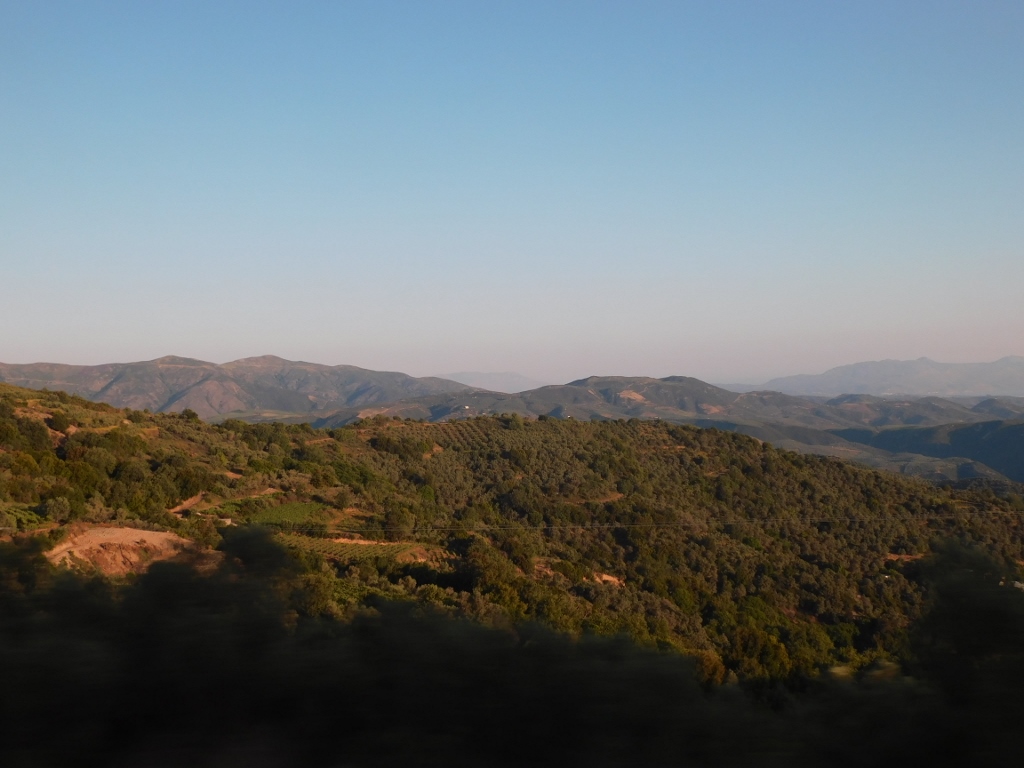 On the way to the Samaria Gorge National Park
On the way to the Samaria Gorge National Park
At some point we made a break in order to have breakfast and/or go to toilet, and soon after we were at the entrance into the gorge marked by the name of Xyloskalo. There we got the entrance tickets and it was very important to keep those tickets, since they are asked for inspection at the exit from the gorge. So, I put the ticket into my fanny pack, took my new trekking poles into my hands and started walking. At first, one goes along a wide path made in the shape of steps since it is quite steep in this section.
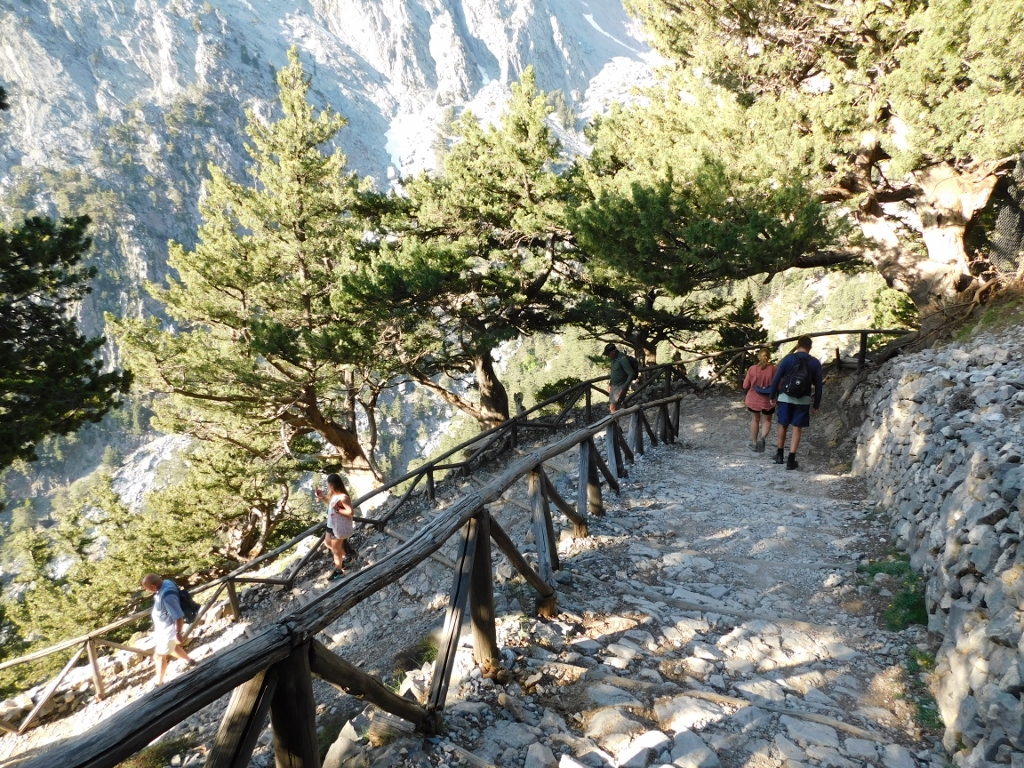 Samaria Gorge, a detail
Samaria Gorge, a detail
In the beginning, the path goes close to the mountain tops and on the other side of the gorge one can see the sheer rocks belonging to Mt. Volakias.
 Samaria Gorge, a detail
Samaria Gorge, a detail
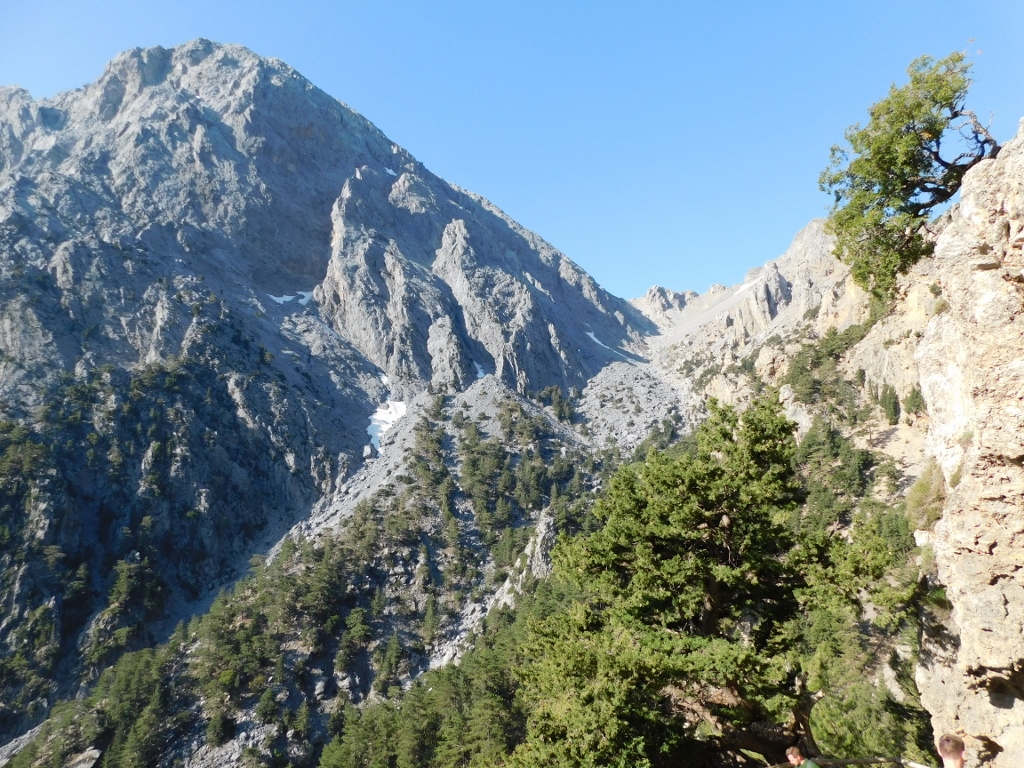 Samaria Gorge, a detail
Samaria Gorge, a detail
But, there was a lot of vegetation in front of me and the sights were absolutely magnificent.
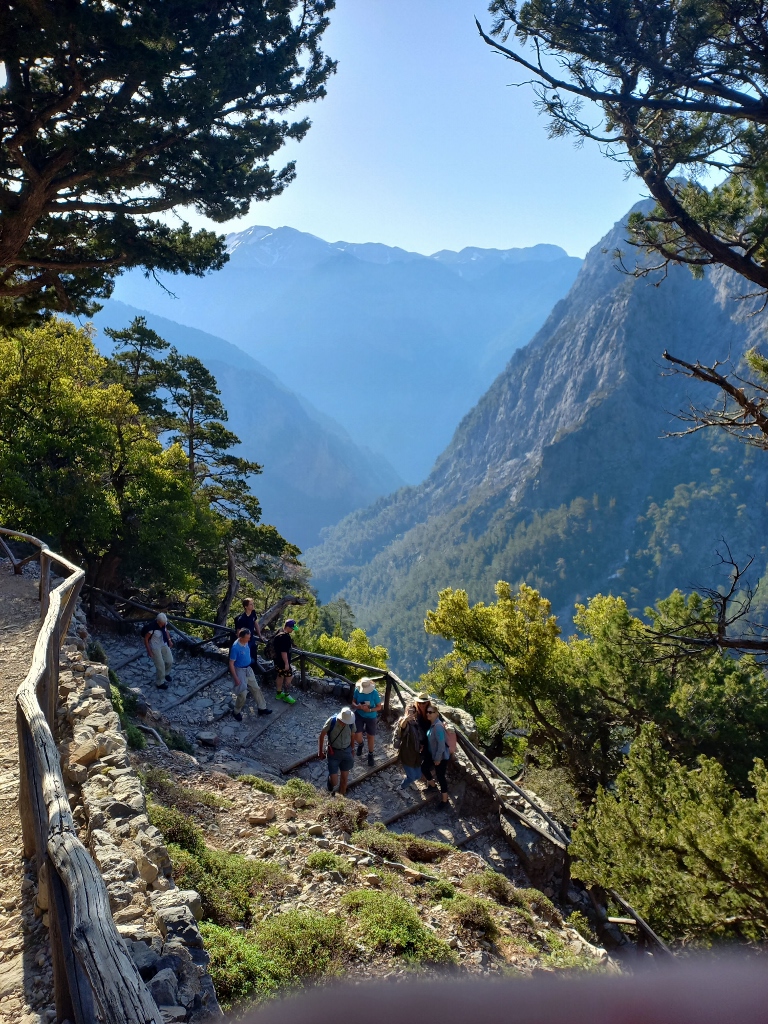 Samaria Gorge, a detail
Samaria Gorge, a detail
The path is a little steeper in some sections, in some others less so, but because of the safety, there is a fence in the initial part of the hiking trail.
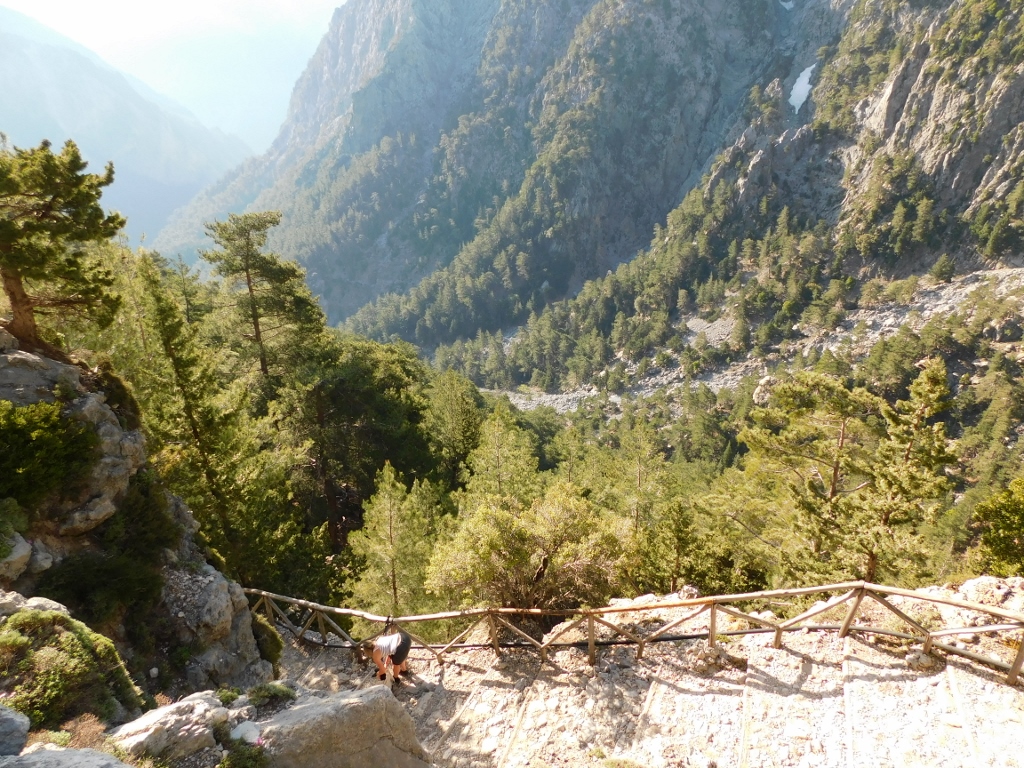 Samaria Gorge, a detail
Samaria Gorge, a detail
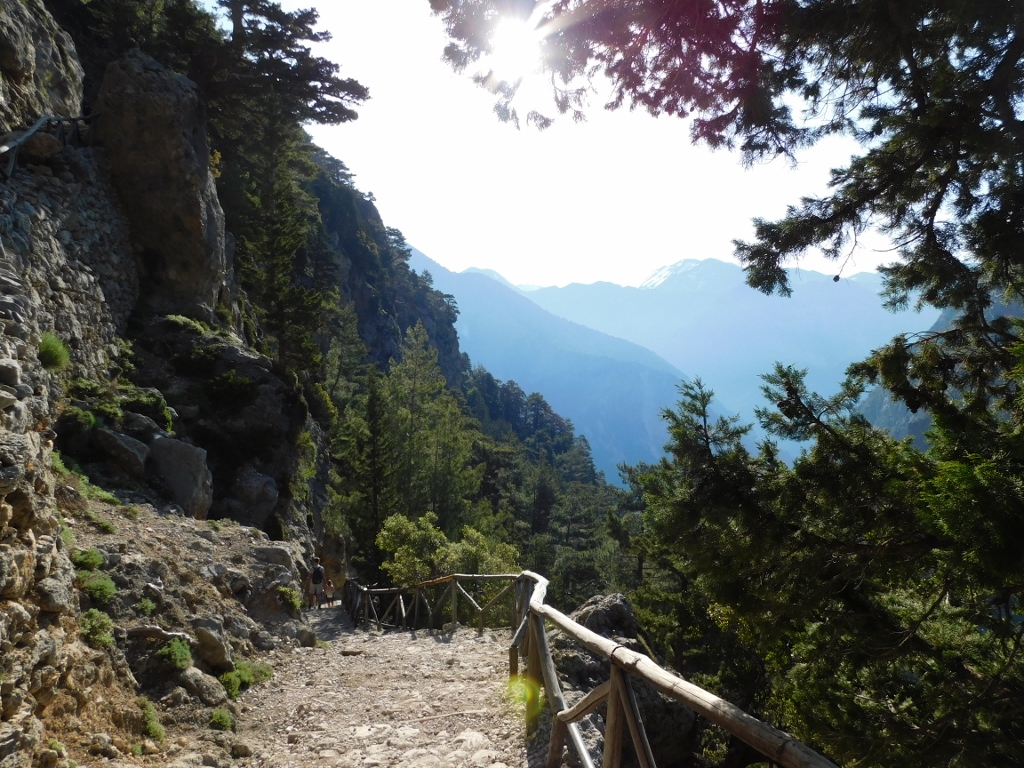 Samaria Gorge, a detail
Samaria Gorge, a detail
In some of the sections, not only was there a fence, but also an entire structure that should protect against the rocks that occasionally fall off here.
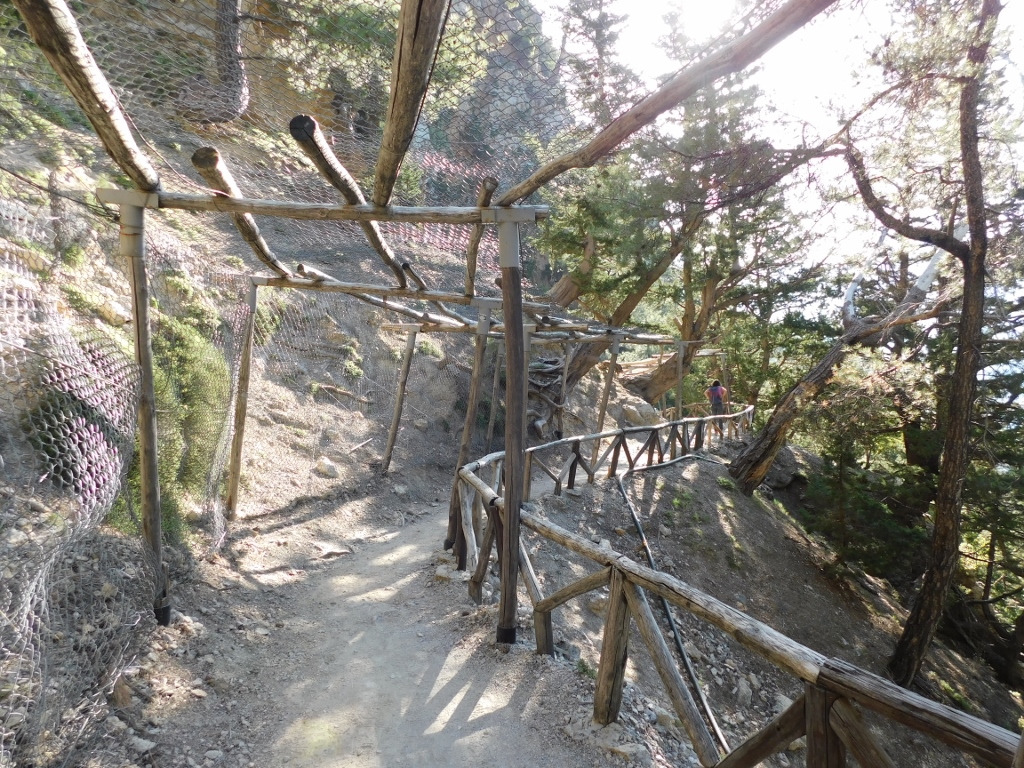 Samaria Gorge, a detail
Samaria Gorge, a detail
In the first leg of the trail, one walks mostly through a pine forest. This is a special type of pine that grows in the Eastern Mediterranean. Of course, not all the trees were pines, but there were certainly a lot of them here.
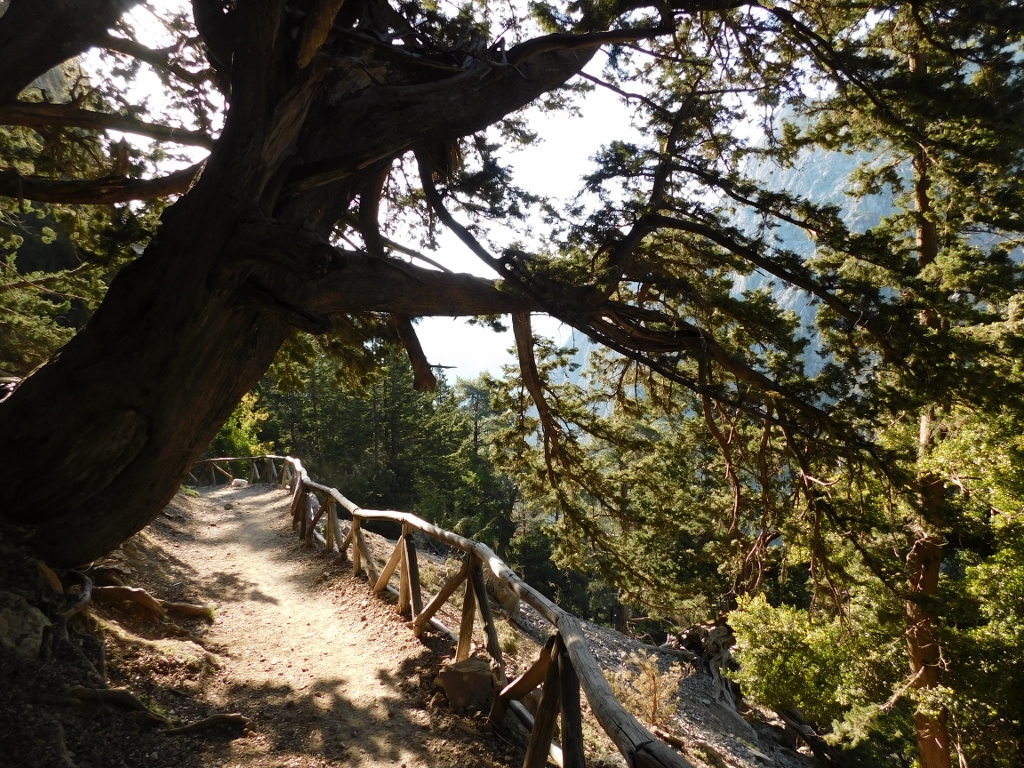 Samaria Gorge, a detail
Samaria Gorge, a detail
The fact that a lot of pines grow here is important, among other reasons, also because over time the resinous pine dry needles accumulate, which can easily lead to a forest fire and its spreading. Because of this, one of the things that is strictly forbidden in the national park and the gorge is – the lighting of a fire.
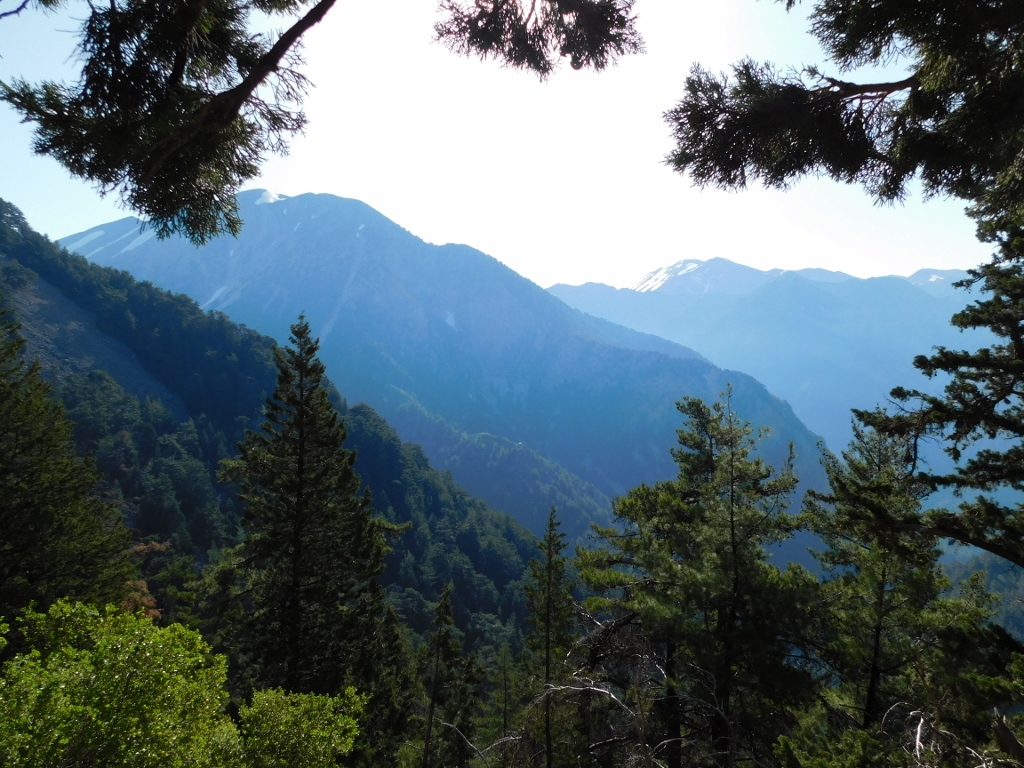 Samaria Gorge, a detail
Samaria Gorge, a detail
When the slopes of the mountains became less steep, although the trail was still quite high up, there were no more steps or fences. It was all more natural.
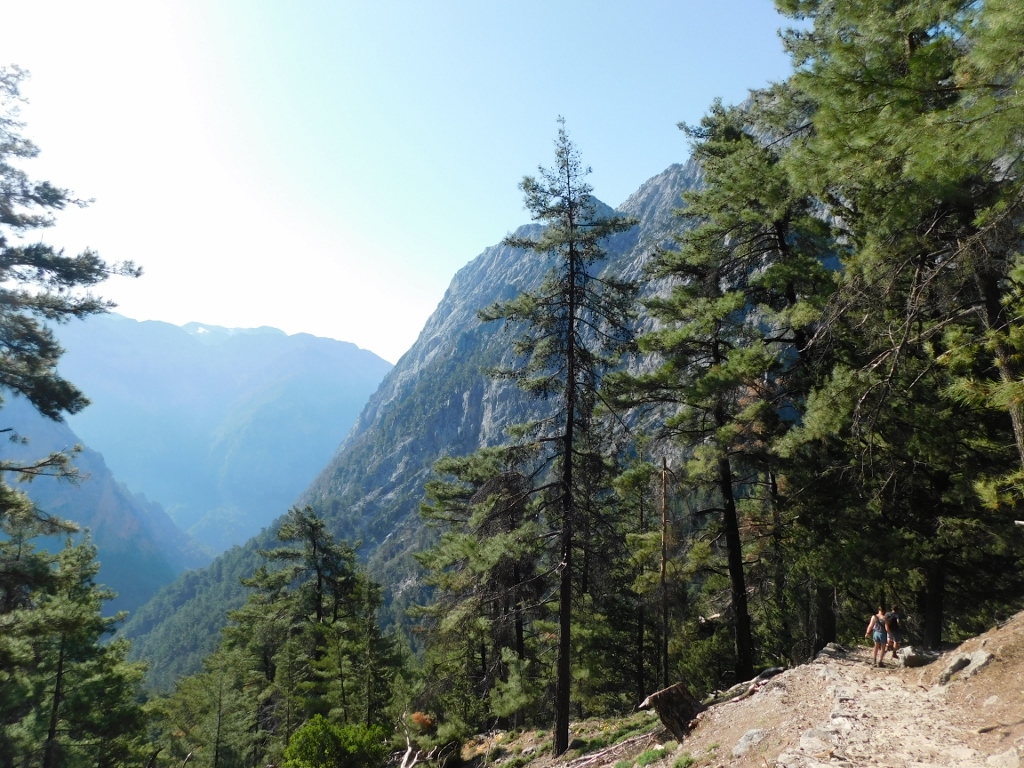 Samaria Gorge, a detail
Samaria Gorge, a detail
After covering 1700 m, you get to the first rest area out of a total of eight that exist along the trail. These places have sources of fresh water and occasionally also places where one can sit and rest a little. There are also spots where one can throw away any garbage, since throwing waste along the trail, other than in the specifically designated spots, is also prohibited. I did not mind these prohibited things at all, because it was quite clear that they had their legitimate purpose. Whoever does not like these, doesn’t have to, but then they should not go to places such as this one.
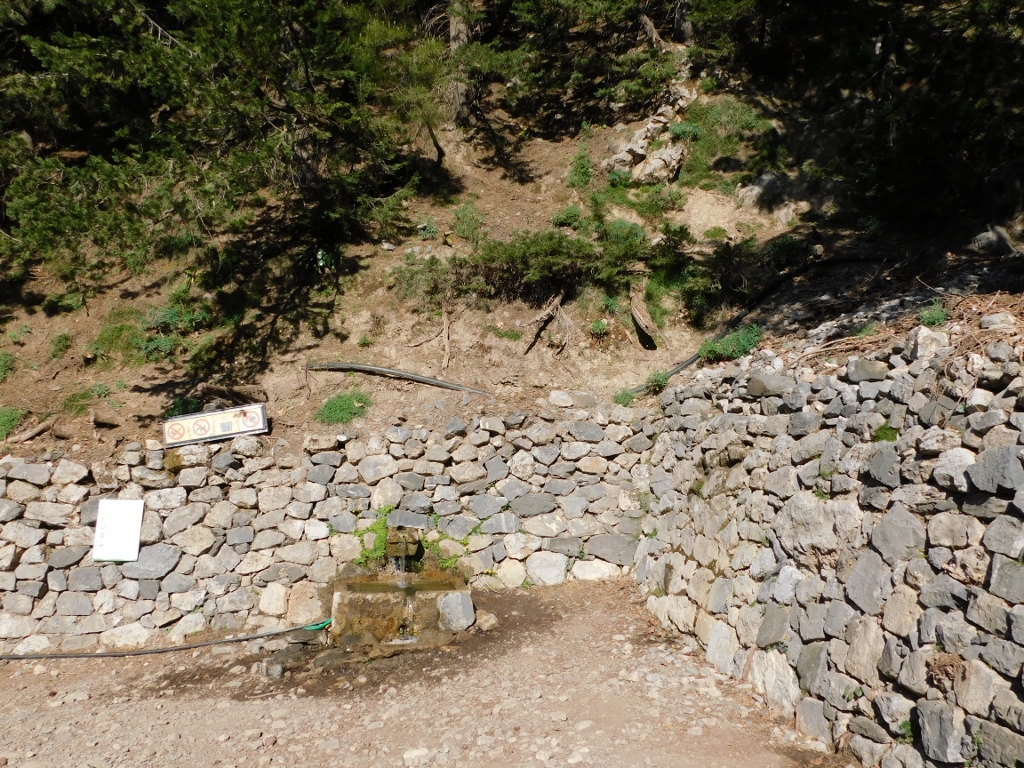 Samaria Gorge, a detail
Samaria Gorge, a detail
As soon as there was a steeper section, there were fences again. It is important to say that, as far as I could conclude, there is a well organised service for the maintenance and for safe-guarding the national park. The guides of different groups (the group from my coach also had one such guide) are very well versed and they are, like the people working directly for the national park, very fit in the first place, but they also know shortcuts, so that they can move easily and speedily. The agreement with our guide was that he would go in the back (in relation to the group) in order to make sure that nobody who came by our coach got stuck somewhere or was hurt or lost.
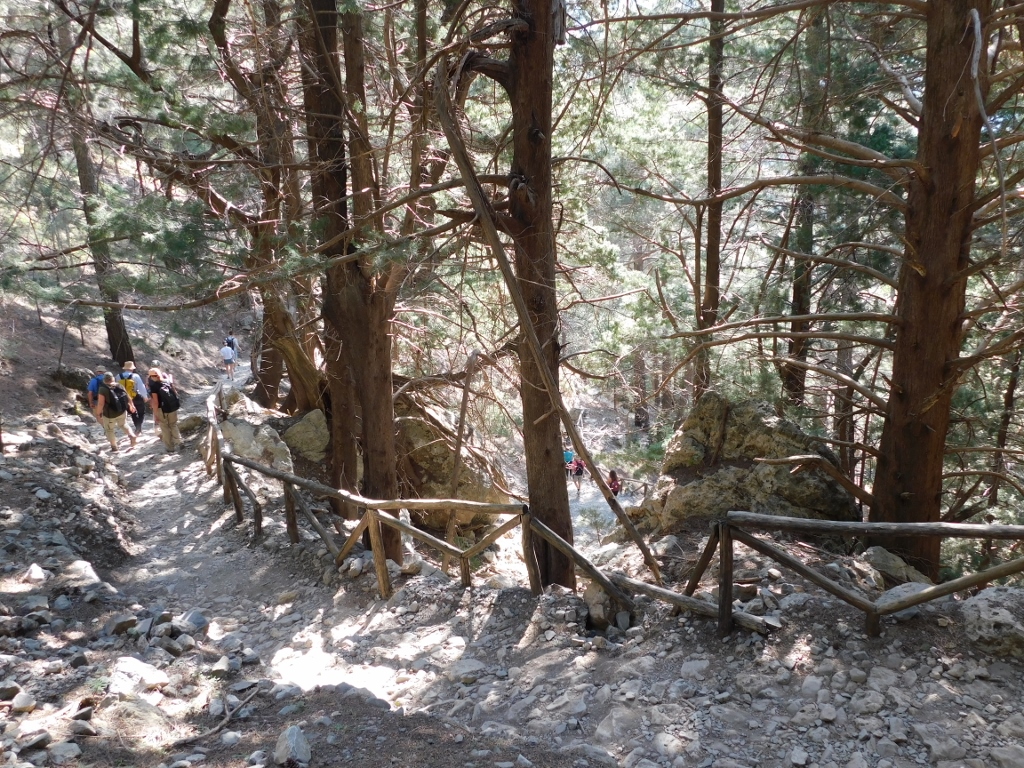 Samaria Gorge, a detail
Samaria Gorge, a detail
The official site of the national park says that the trail can be covered in 5 to 5 and a half hours, even if one walks slowly. Of course, they don’t know me and my passion linked to photography. Since I express my admiration of what I see around me by using my camera, I often felt the need to stop and take photos. Even of the treetops and the sky, like in the photo below, or of wild flowers, white asphodel (Asphodelus albus) and a bee, like in the next photo. The result: it took me over 8 hours to get to village Agia Roumeli!!! But, I enjoyed intensively in every moment.
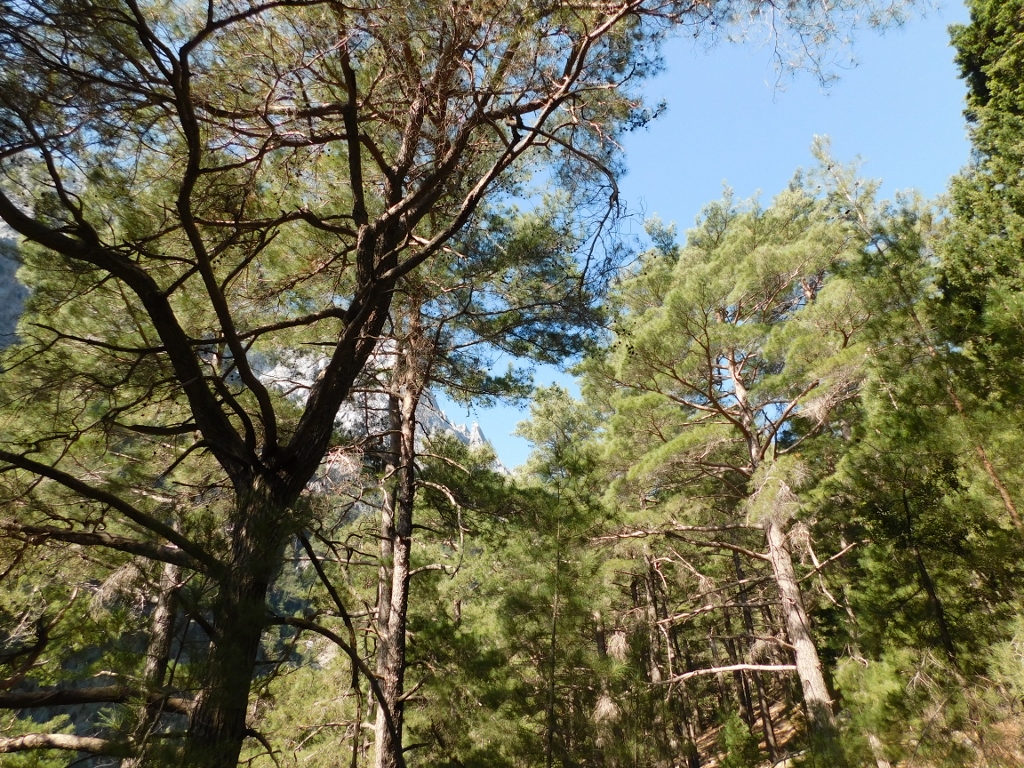 Samaria Gorge, a detail
Samaria Gorge, a detail
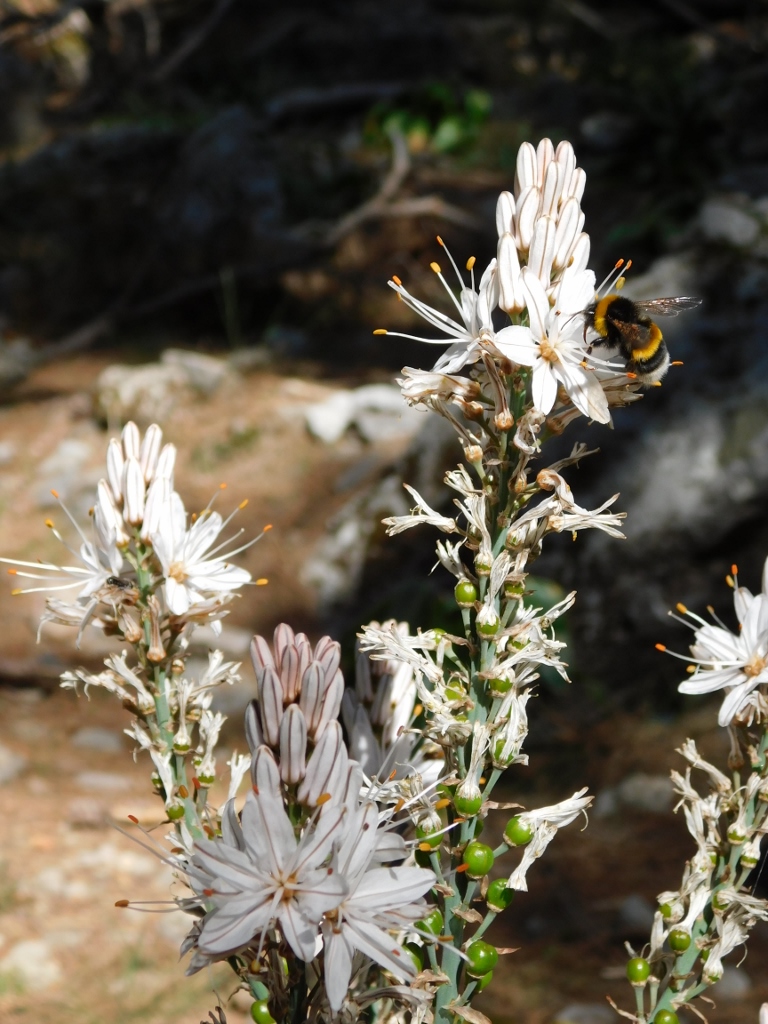 White asphodel
White asphodel
Soon the trail started to lead along a small river that runs through the gorge and very often across the river, which can be seen in the panoramic photo below.
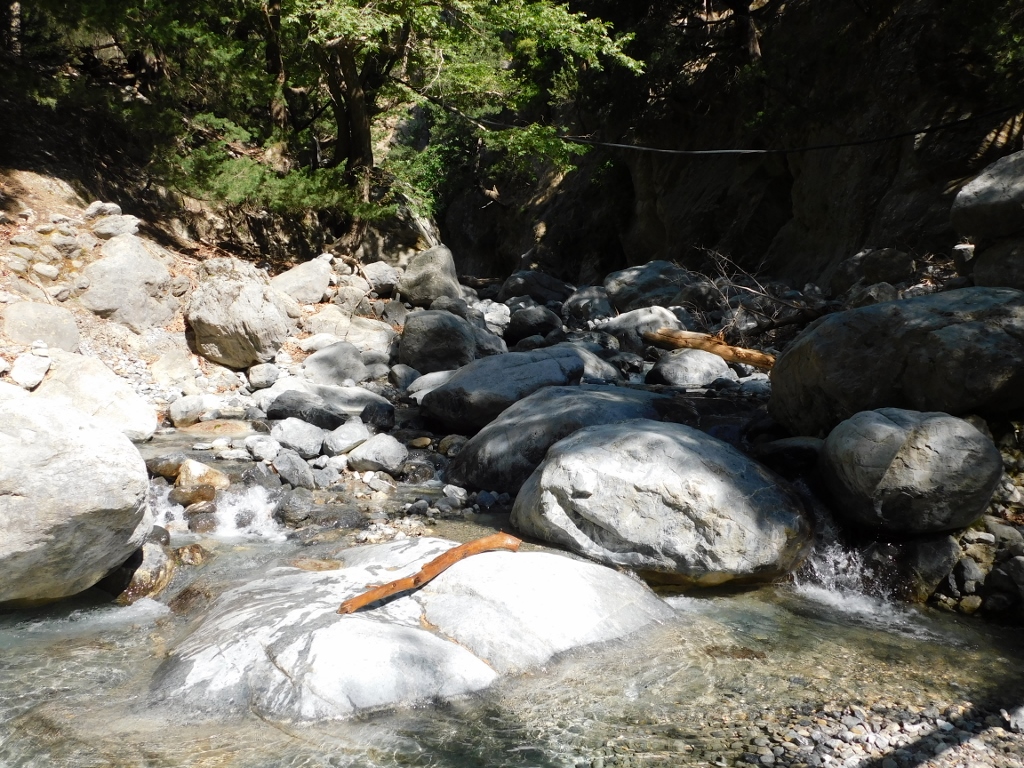 Samaria Gorge, a detail
Samaria Gorge, a detail
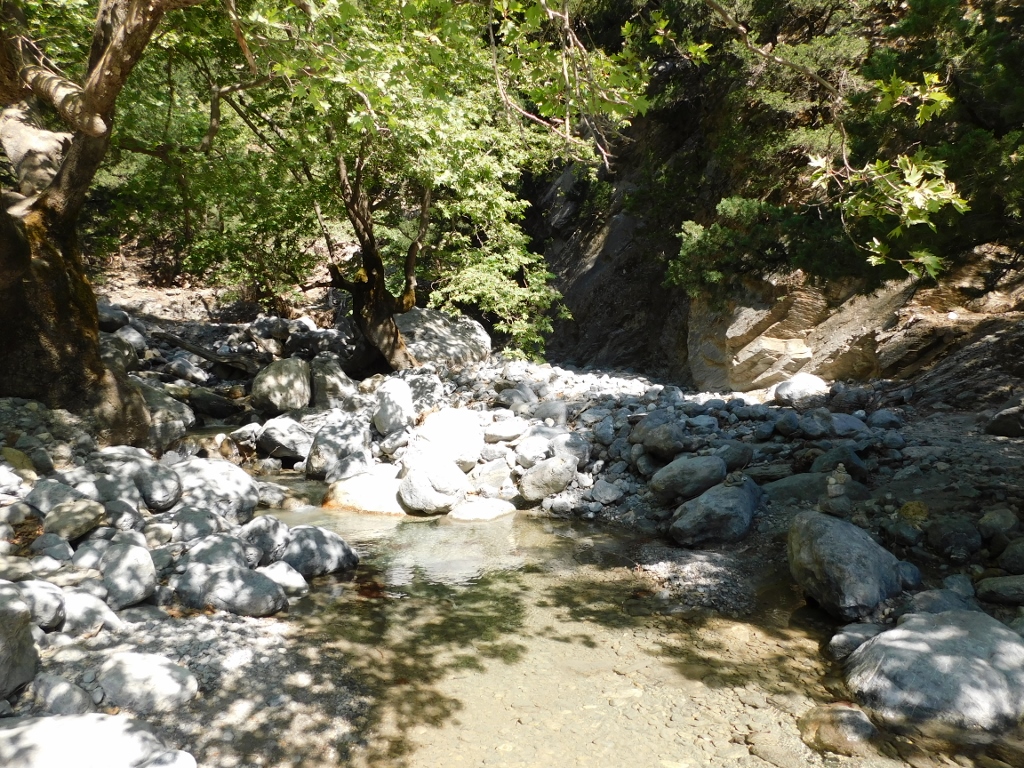 Samaria Gorge, a detail
Samaria Gorge, a detail
 Samaria Gorge, a detail
Samaria Gorge, a detail
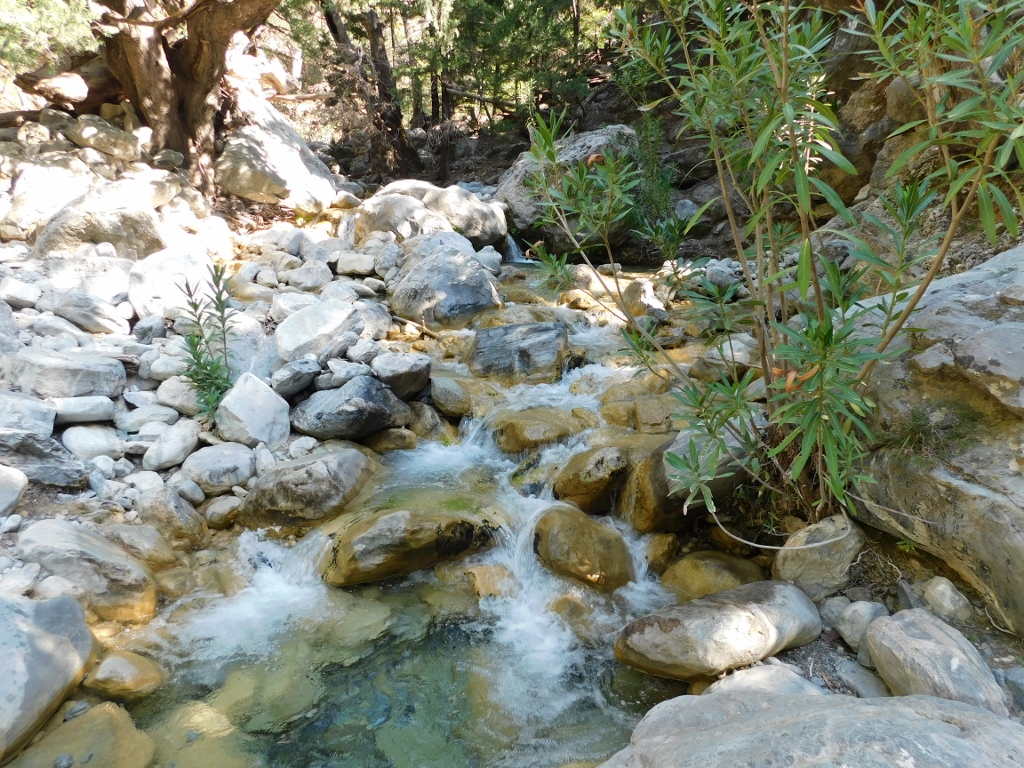 Samaria Gorge, a detail
Samaria Gorge, a detail
Then the trail led to yet another rest area named after St. Nicholas or Agios Nikolaos. There is an ancient shrine there from the 6th century BCE that used to be set out in the open around a big bolder. In this part of the gorge archaeologists have found remains of the bones of sacrificed animals, as well as antique clay oil lamps, different figurines, etc.
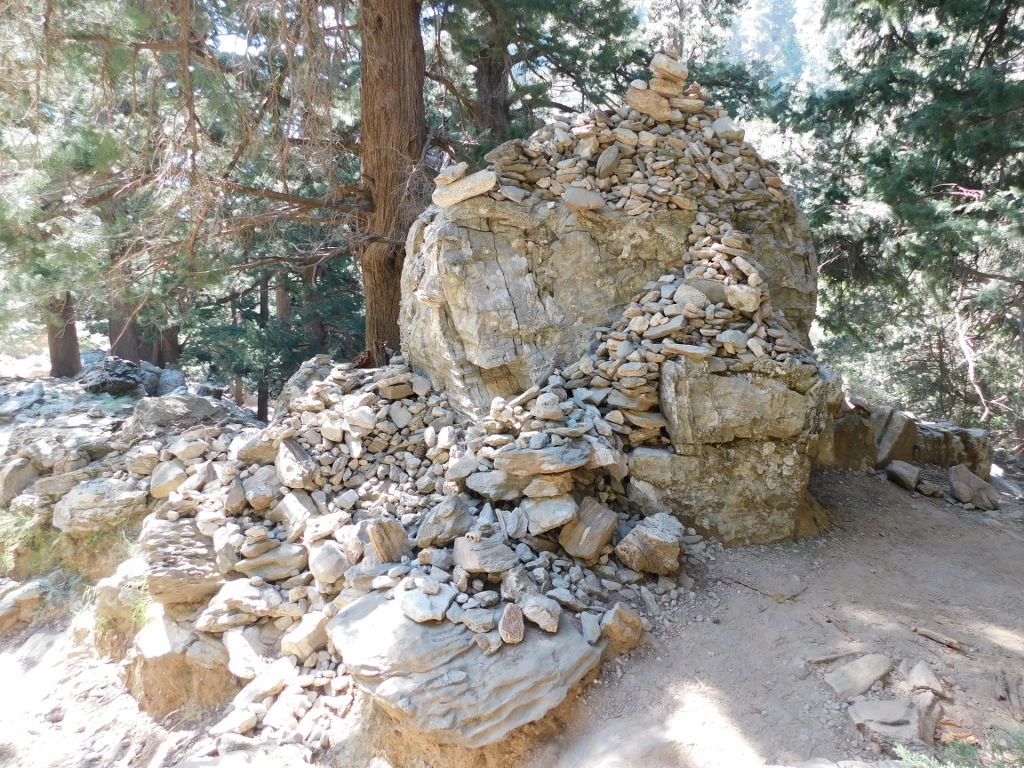 Samaria Gorge, a detail
Samaria Gorge, a detail
Although I saw an information board by the big bolder that can be seen in the photo above, I am actually not sure at all that this is THE bolder. The entire space of the rest area takes up a clearing where there was again a fresh water spring, as well as a toilet, and a little farther down the trail that passed by some big cypresses (in addition to pine forests there are also cypress forests as well as many other trees), I reached St. Nicholas Chapel.
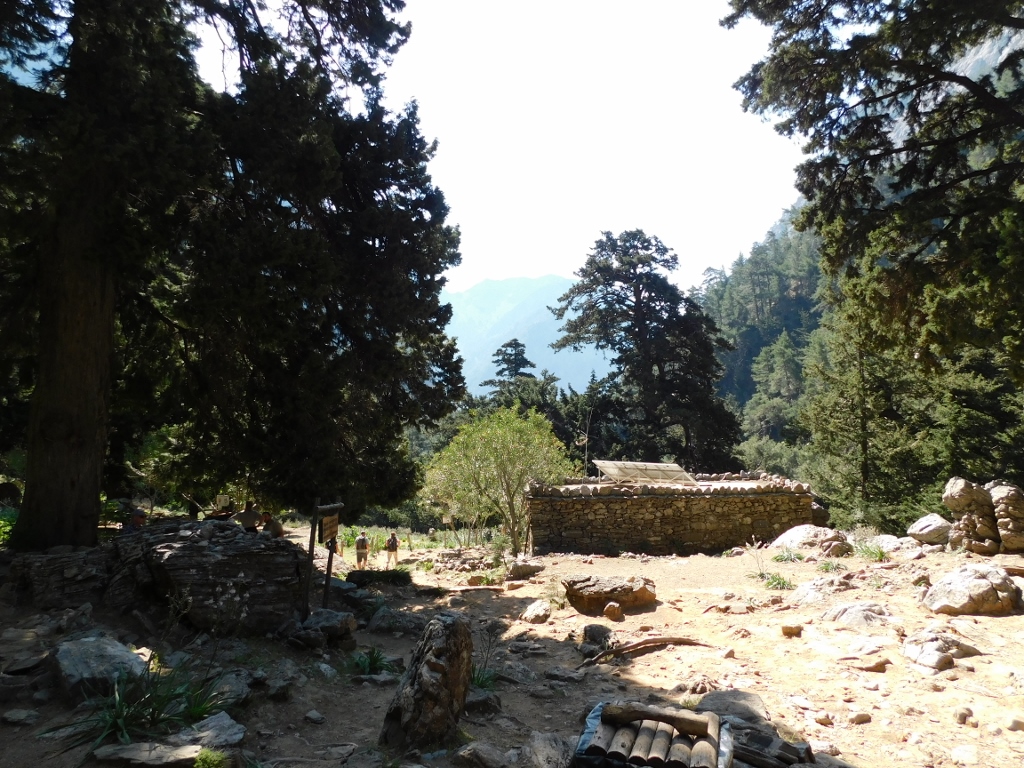 Samaria Gorge, a detail
Samaria Gorge, a detail
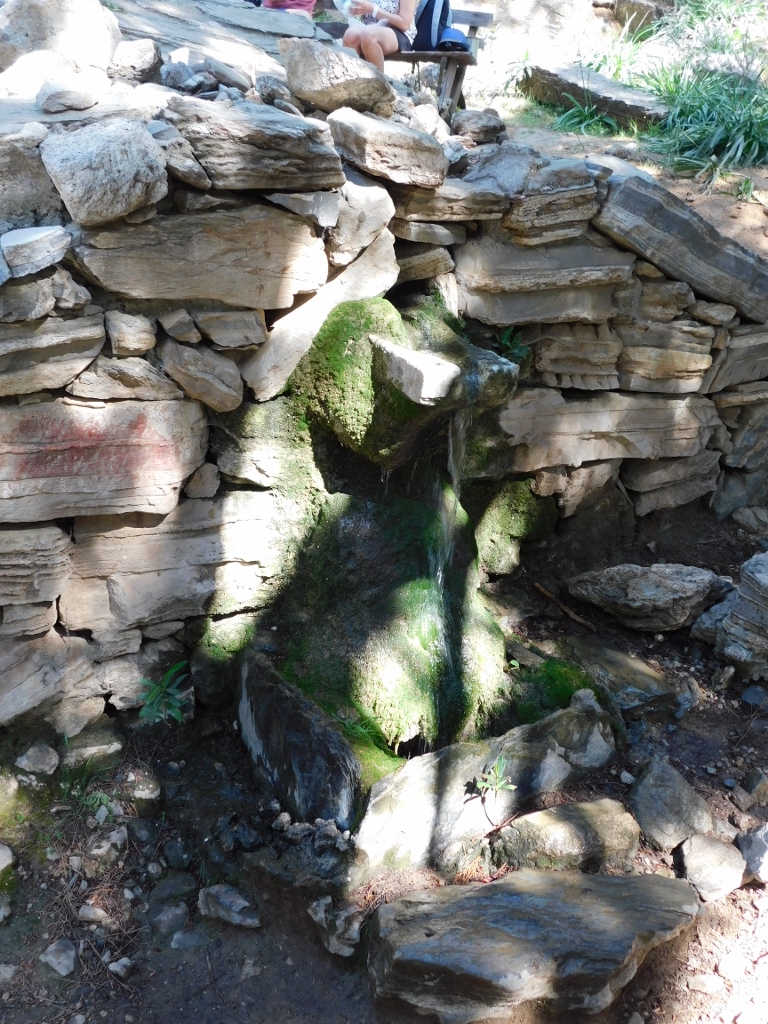 Samaria Gorge, a detail
Samaria Gorge, a detail
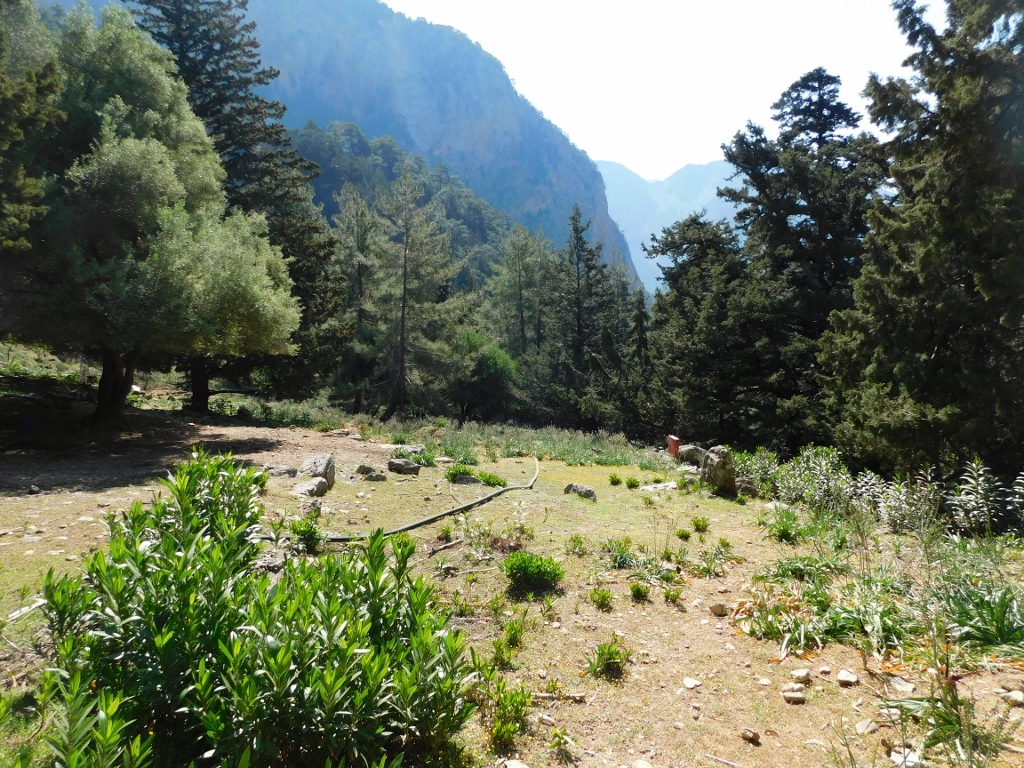 Samaria Gorge, a detail
Samaria Gorge, a detail
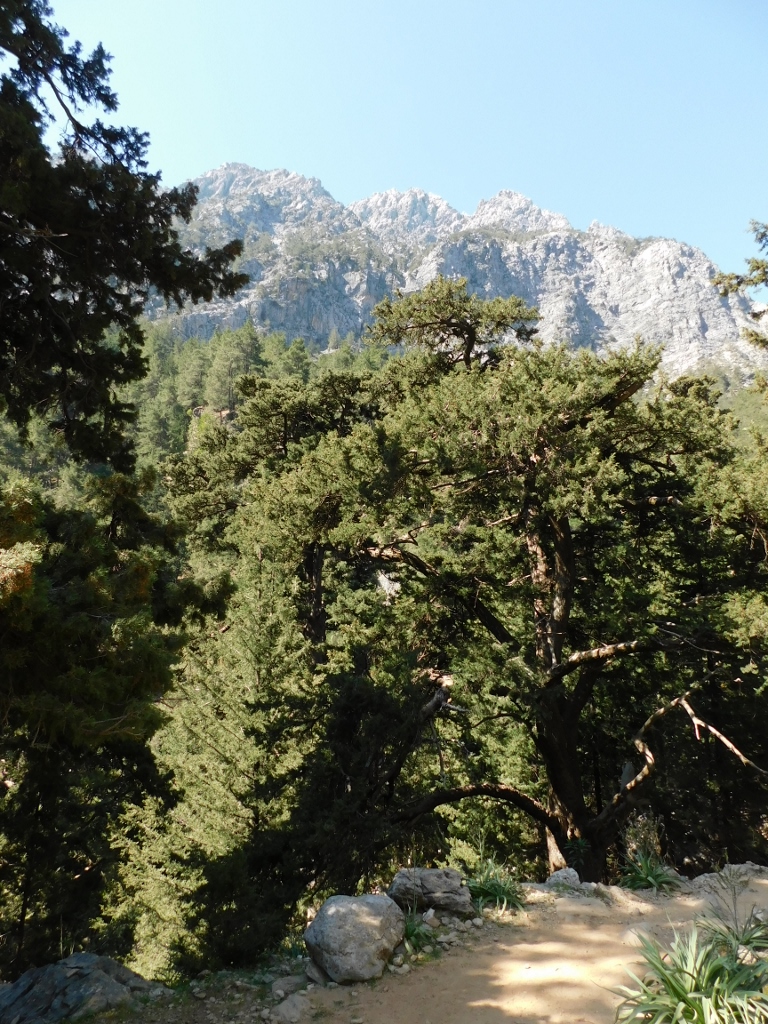 Samaria Gorge, a detail
Samaria Gorge, a detail
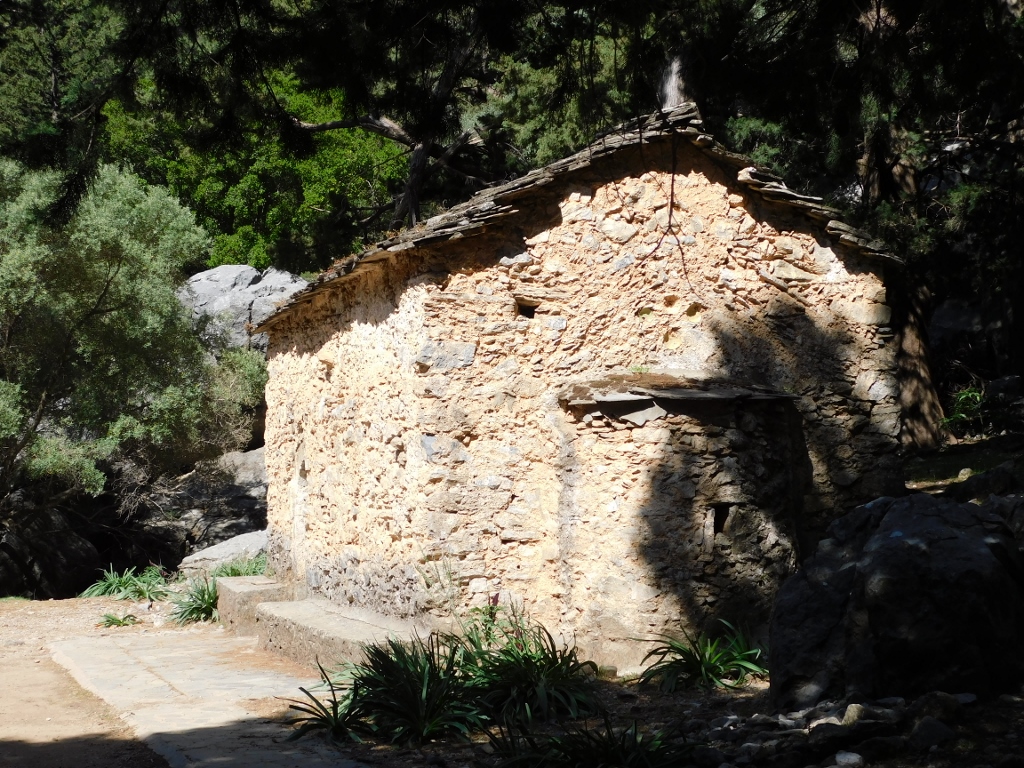 St. Nicholas Chapel
St. Nicholas Chapel
St. Nicholas Chapel was built on the spot where there used to be a shrine dedicated to god Apollo, which has been concluded on the basis of archaeological finds in this area.
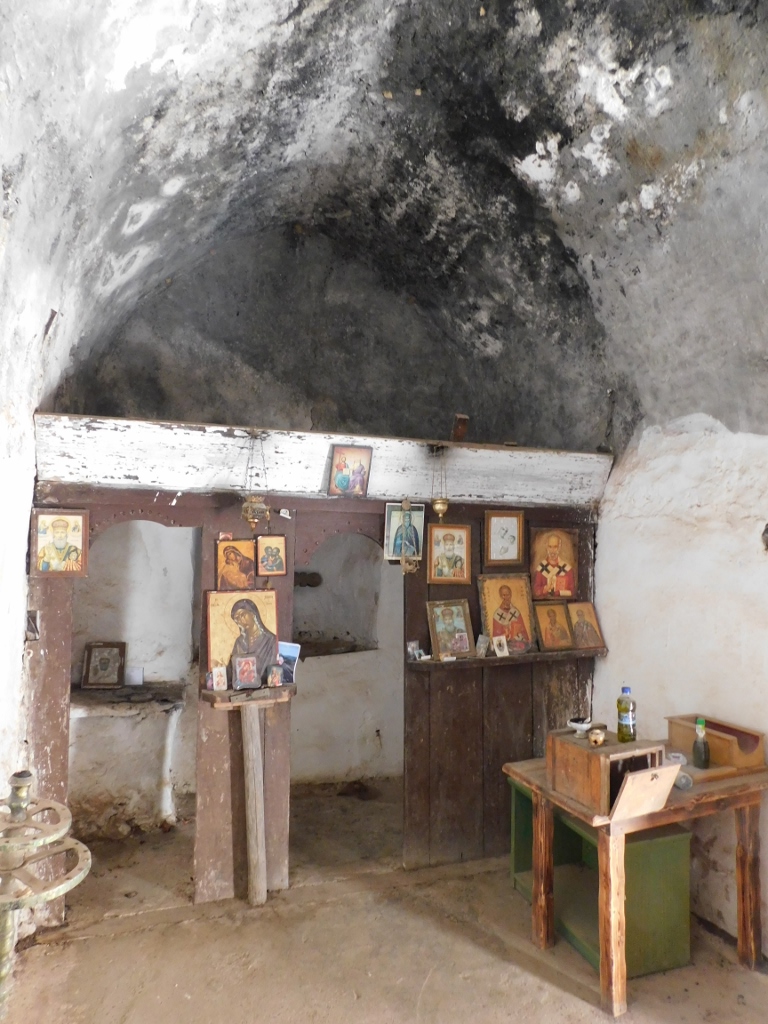 St. Nicholas Chapel, the interior
St. Nicholas Chapel, the interior
Having left the chapel, I noticed nearby a very lovely bird, a male chaffinch (Fringilla coelebs), that had just caught a nice, fat worm.
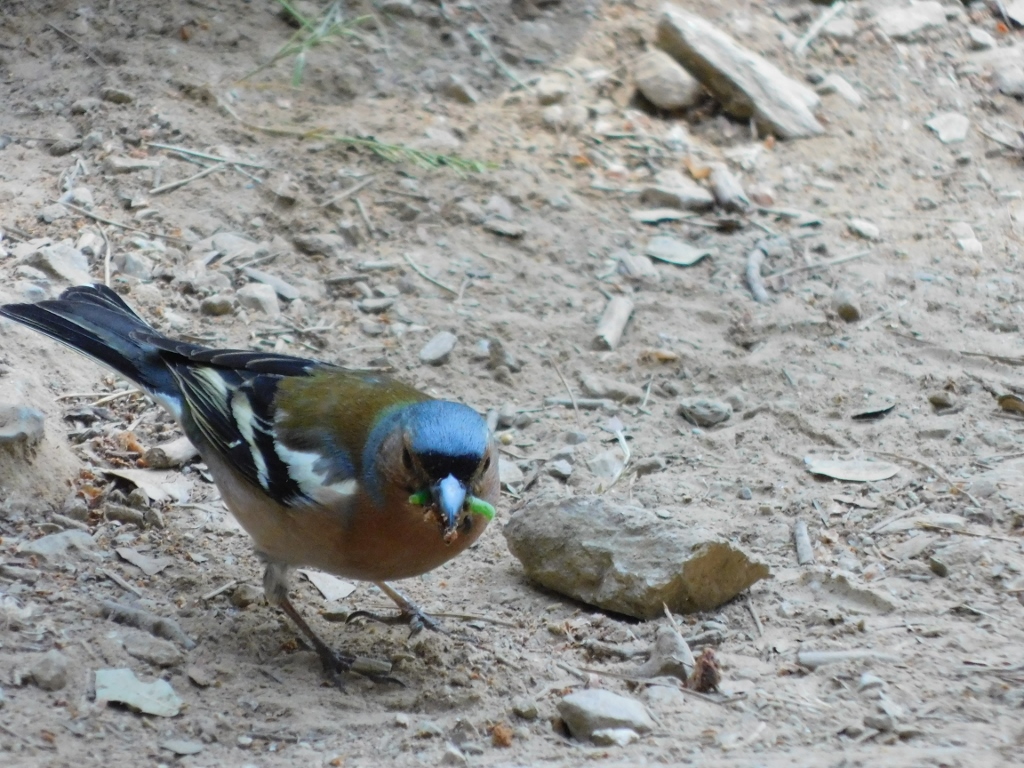 Male chaffinch
Male chaffinch
Talking about birds, let me mention that any removal or destruction of nests in the national park is also prohibited, as well as possession of weapons and traps. There must be reasons why the national park decided to emphasise all of this. Who knows what would have happened if it hadn’t been emphasised? The visitors, and people in general, sometimes know how to be very “creative.”
It is also prohibited to pick flowers. This is especially important since very soon I noticed an exceptionally interesting plant, either as a piece or two, or dozens of these plants within a small area. I’m talking about dragon arum (Dracunculus vulgaris) which is considered to be one of the stinkiest plants in the world.
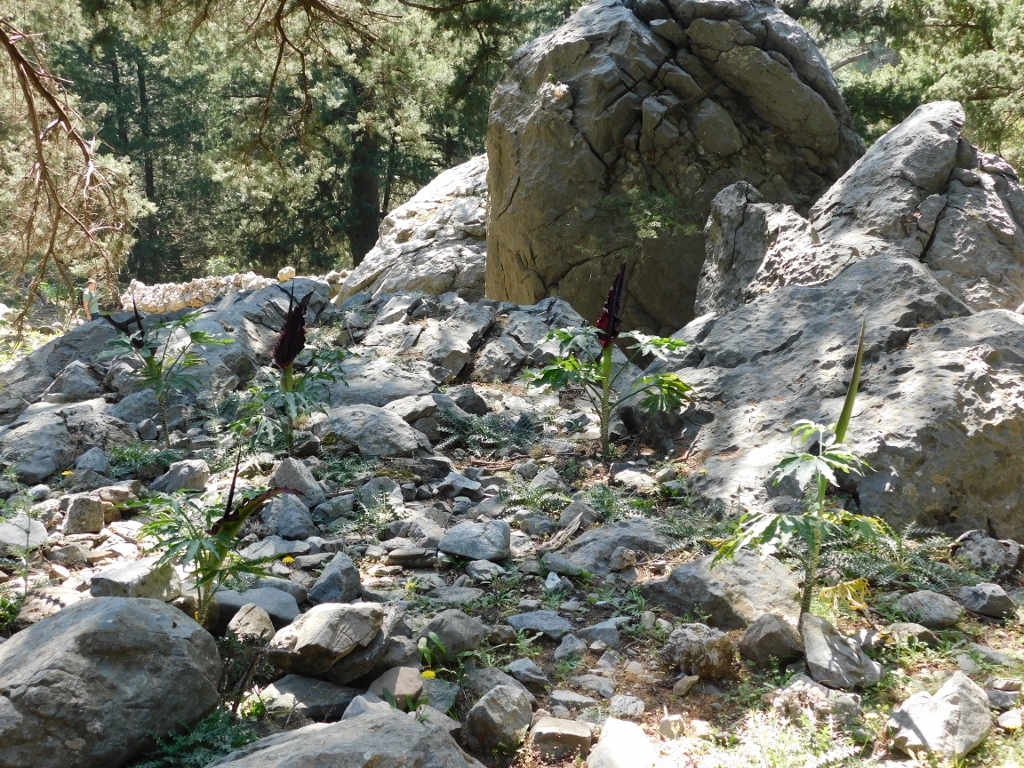 Dragon arum
Dragon arum
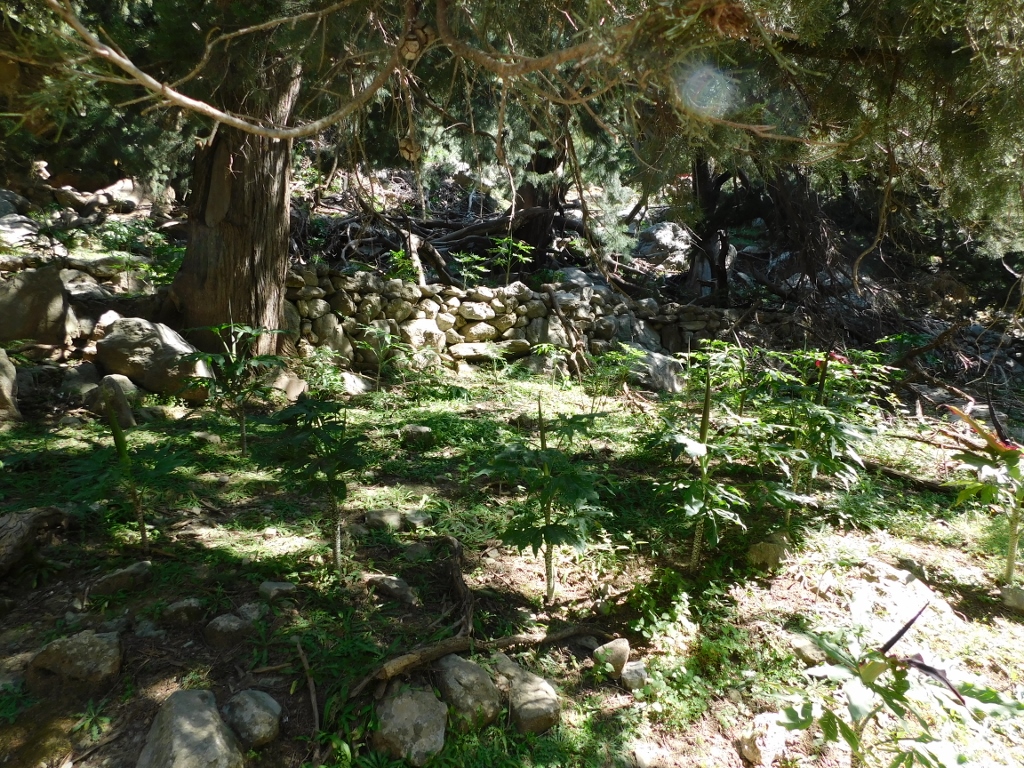 Dragon arum
Dragon arum
From up close, the plant is even more impressive.
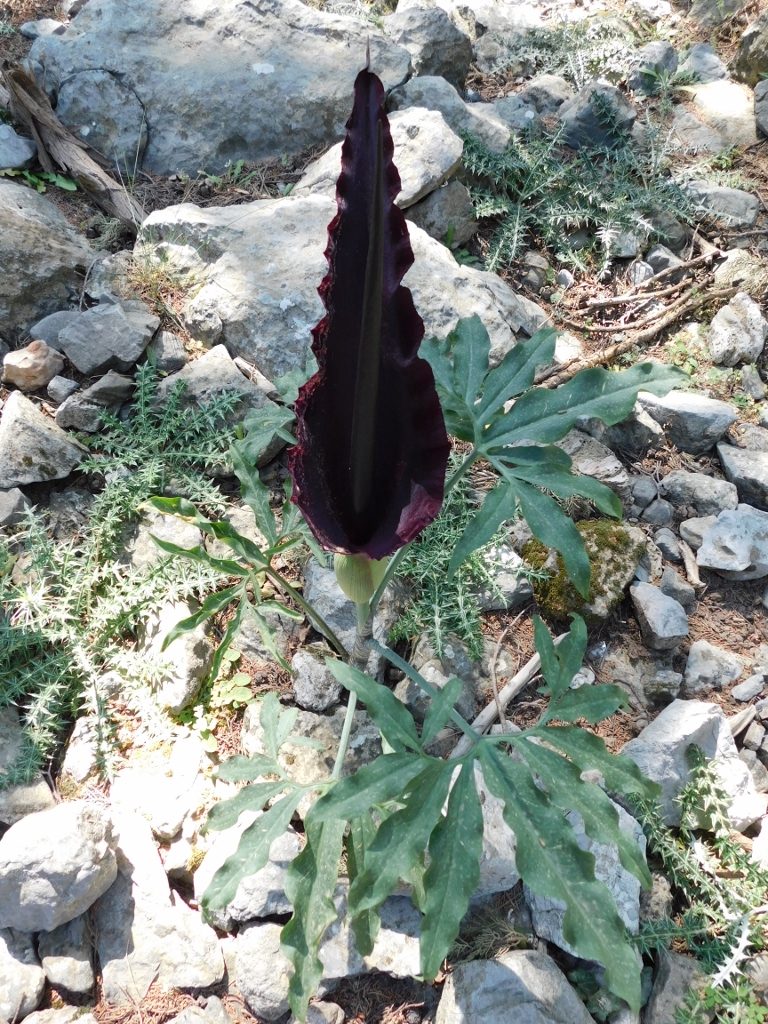 Dragon arum
Dragon arum
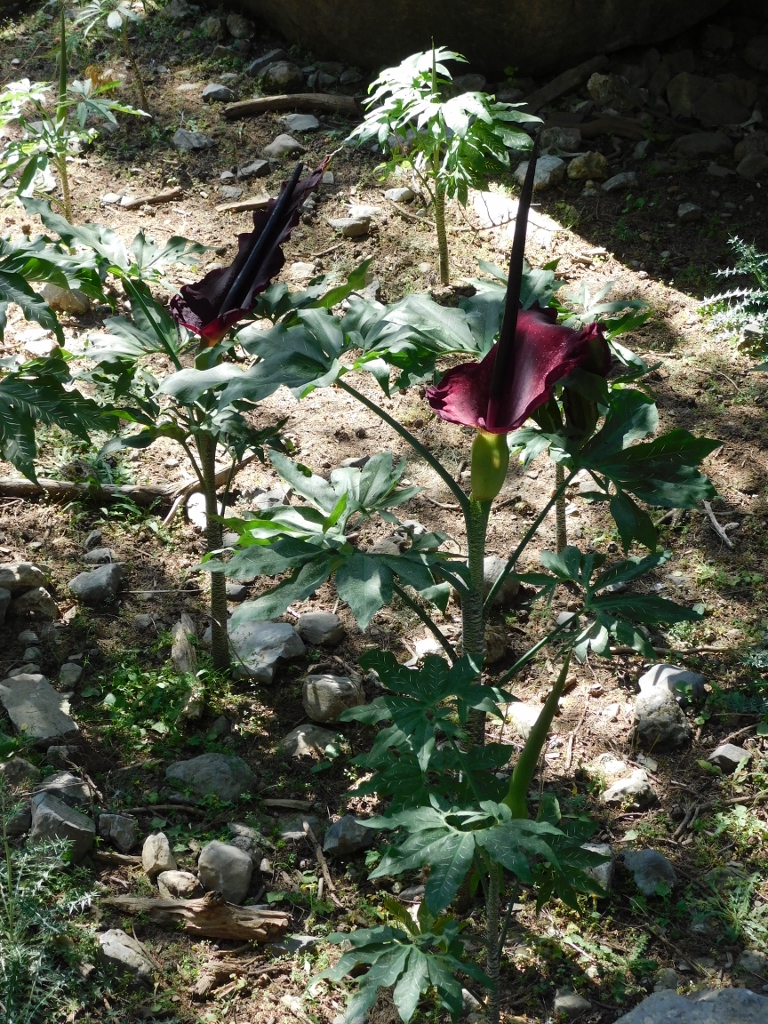 Dragon arum
Dragon arum
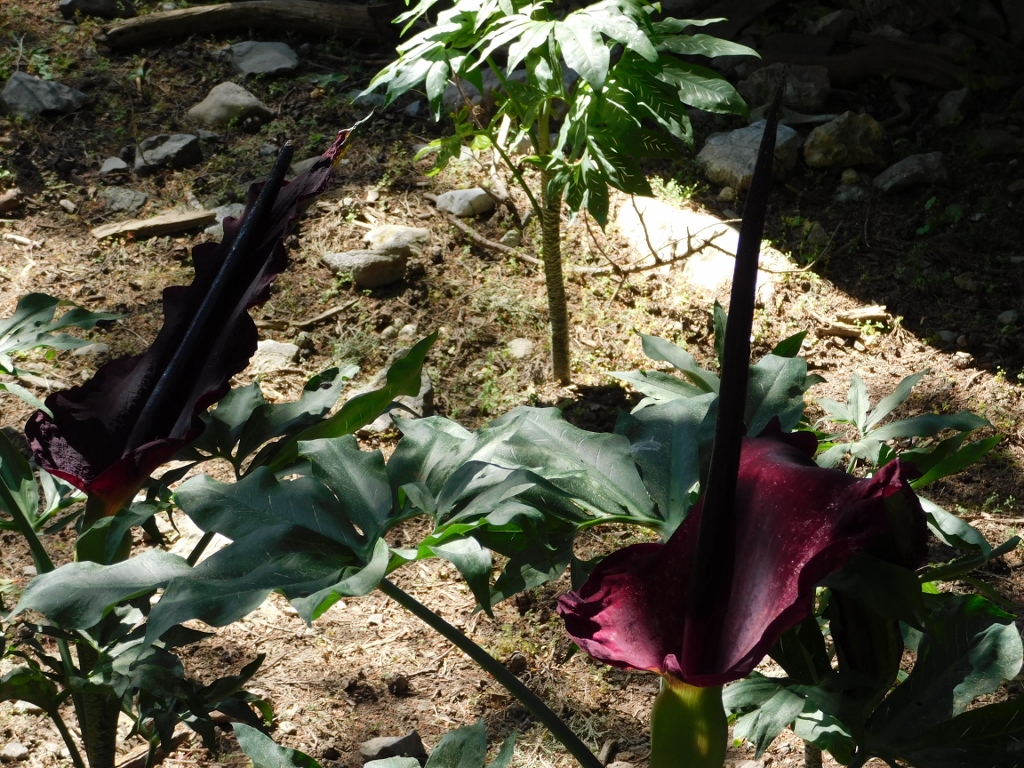 Dragon arum
Dragon arum
The plant seems very exotic and it is quite big – it can grow up to the height of as much as 1.5 to even 2 m. When the flower gets to the full ripeness it starts to emit smell that resembles that of rotten meat, thus attracting insects which in turn pollinate it. At the time when I walked through Samaria Gorge, the flowers still did not reach the maturity and no smell could be sensed, so I could enjoy their beauty without any unwelcome side effects.
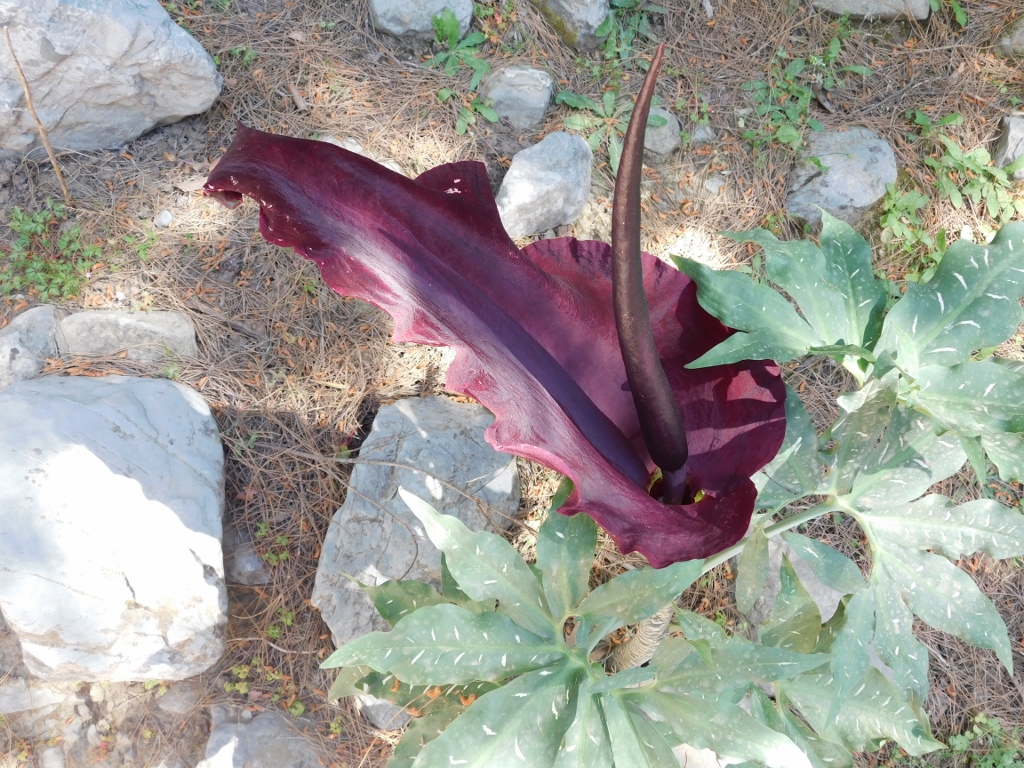 Dragon arum
Dragon arum
There were also other types of flowers, but less noticeable.
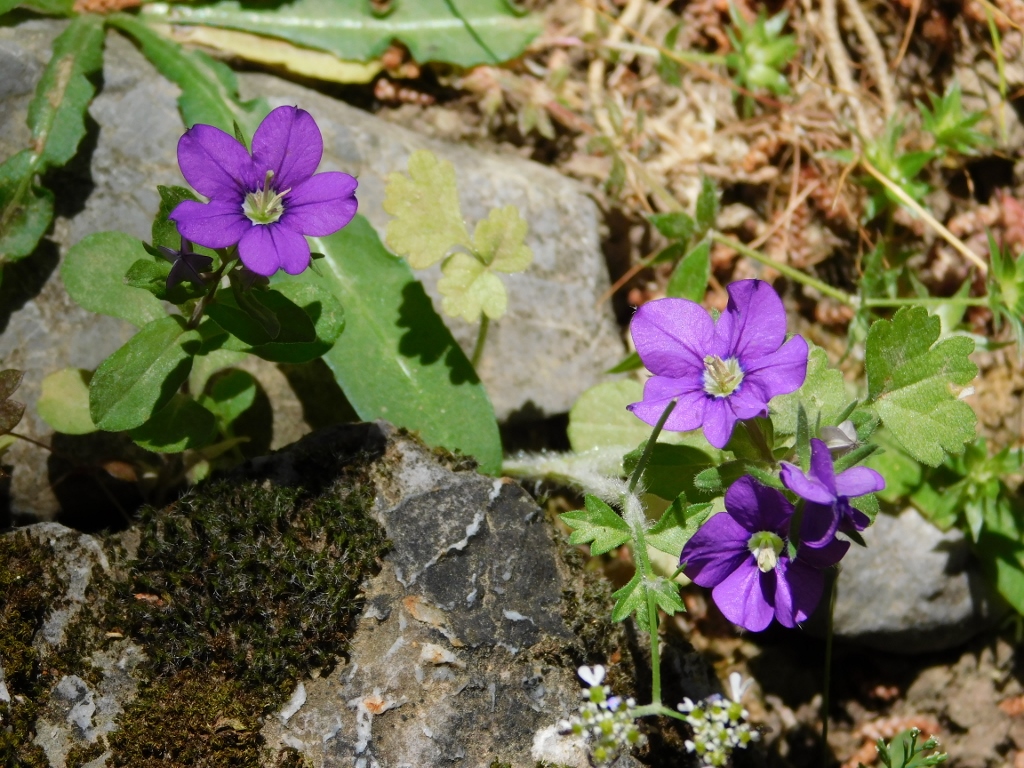 Samaria Gorge, a detail
Samaria Gorge, a detail
After this I simply continued walking along the trail which in this section also led over the beautifully clear small river. I don’t have many comments about all of this and I think that the photographs speak quite well for themselves.
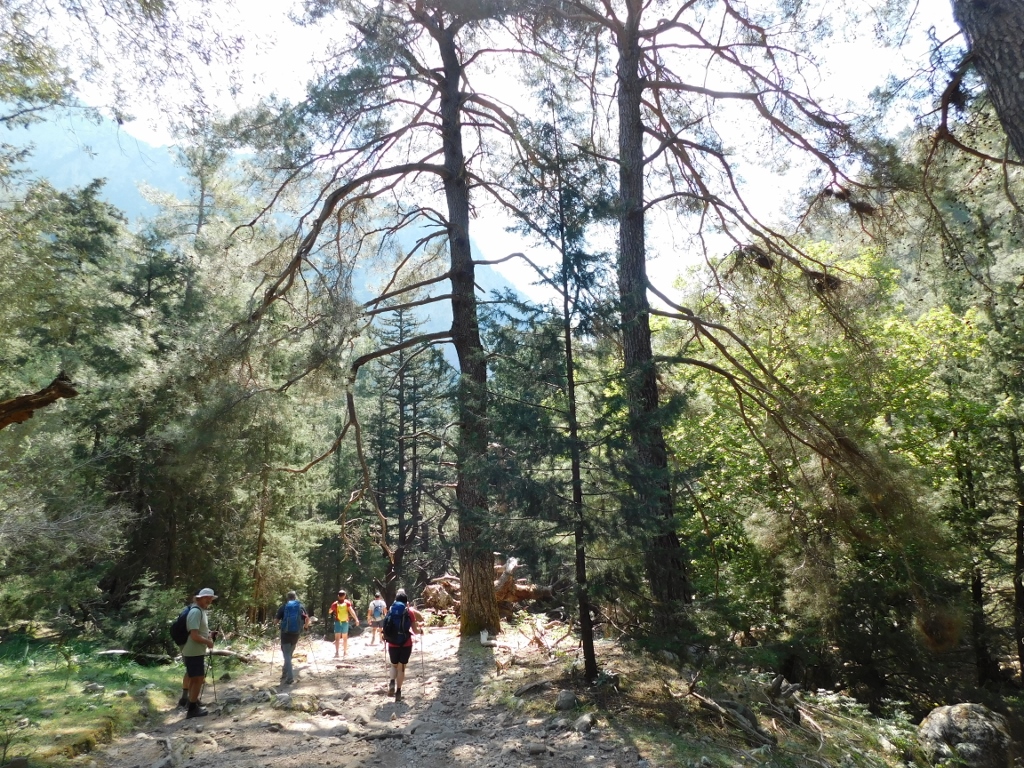 Samaria Gorge, a detail
Samaria Gorge, a detail
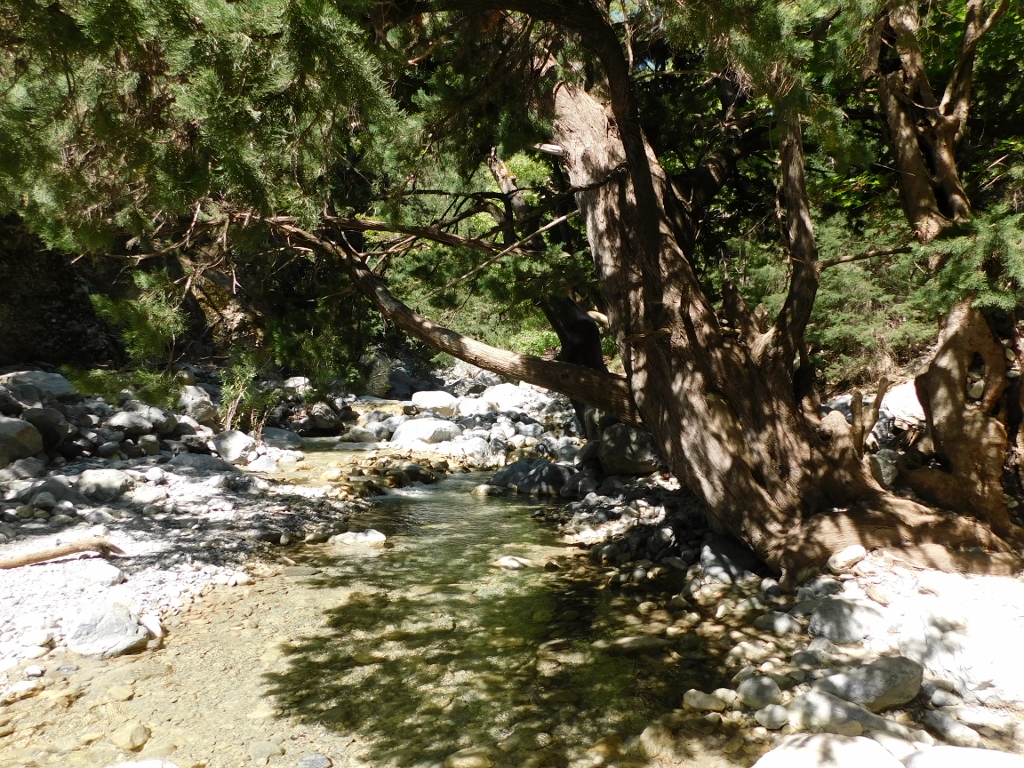 Samaria Gorge, a detail
Samaria Gorge, a detail
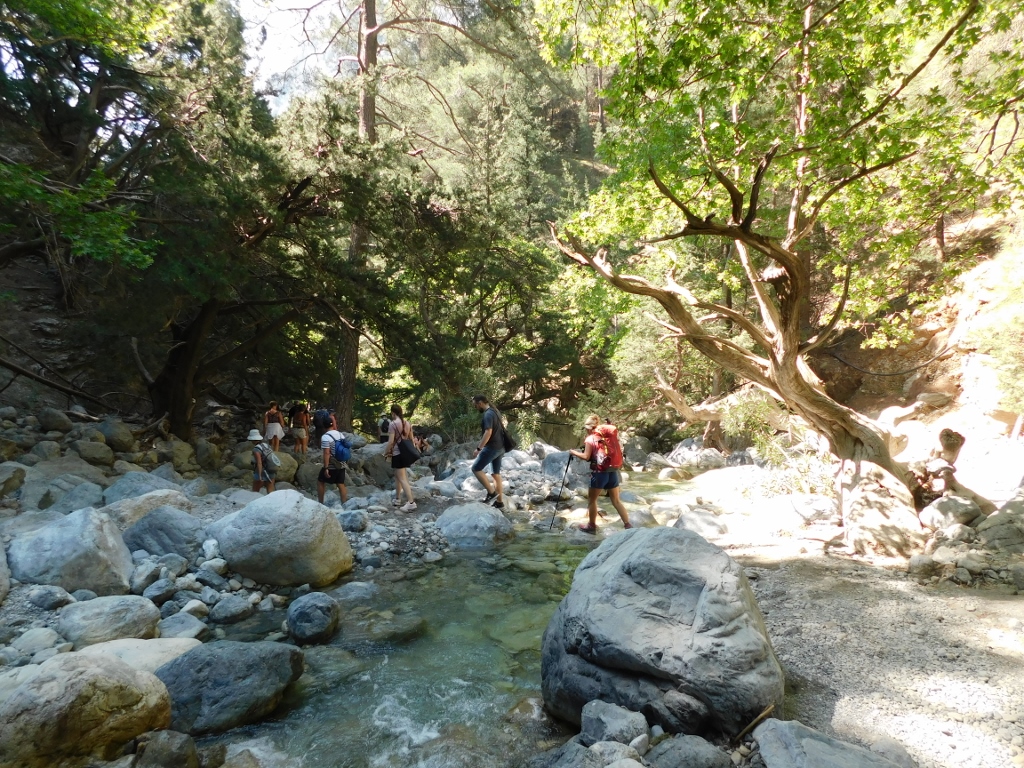 Samaria Gorge, a detail
Samaria Gorge, a detail
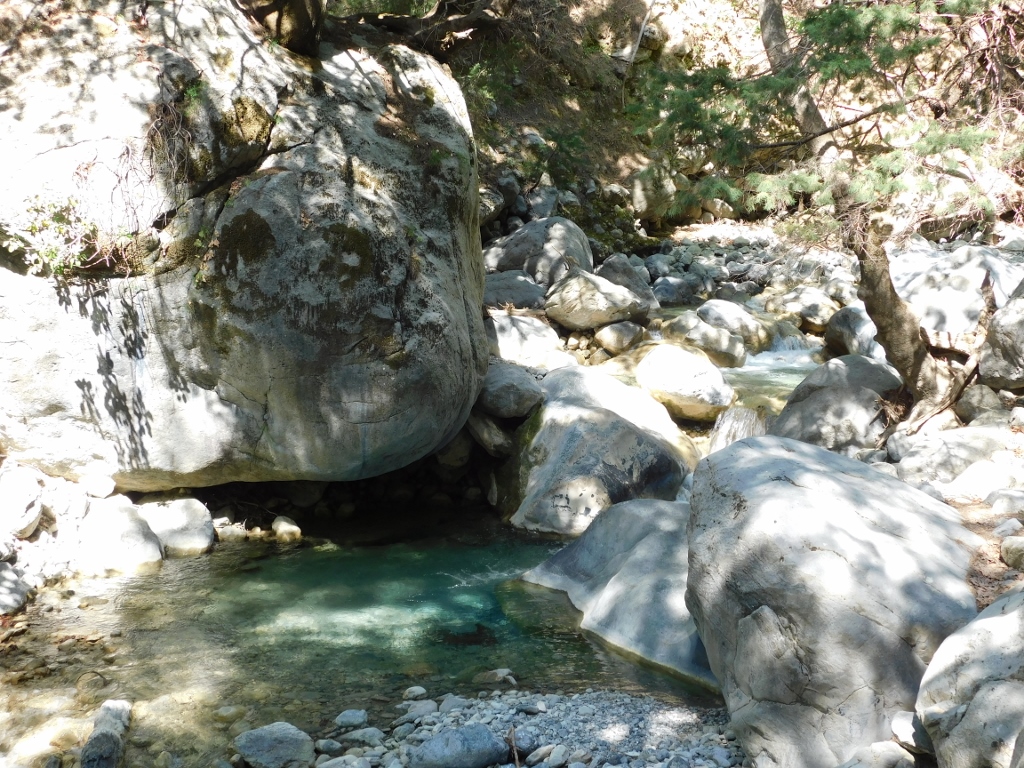 Samaria Gorge, a detail
Samaria Gorge, a detail
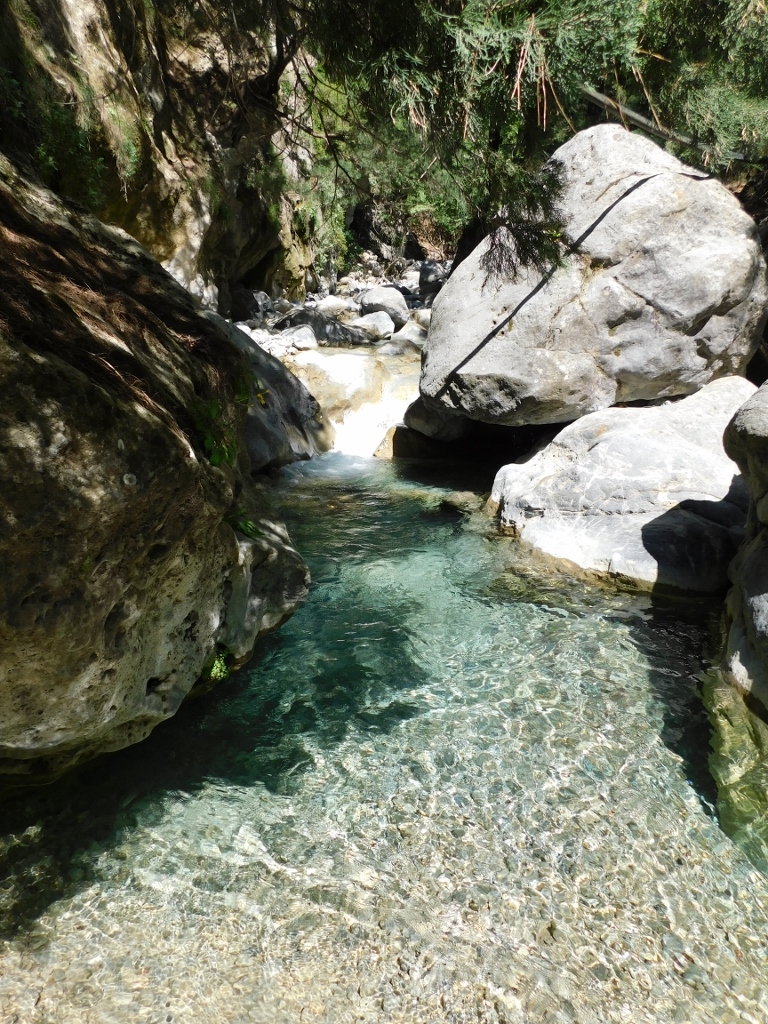 Samaria Gorge, a detail
Samaria Gorge, a detail
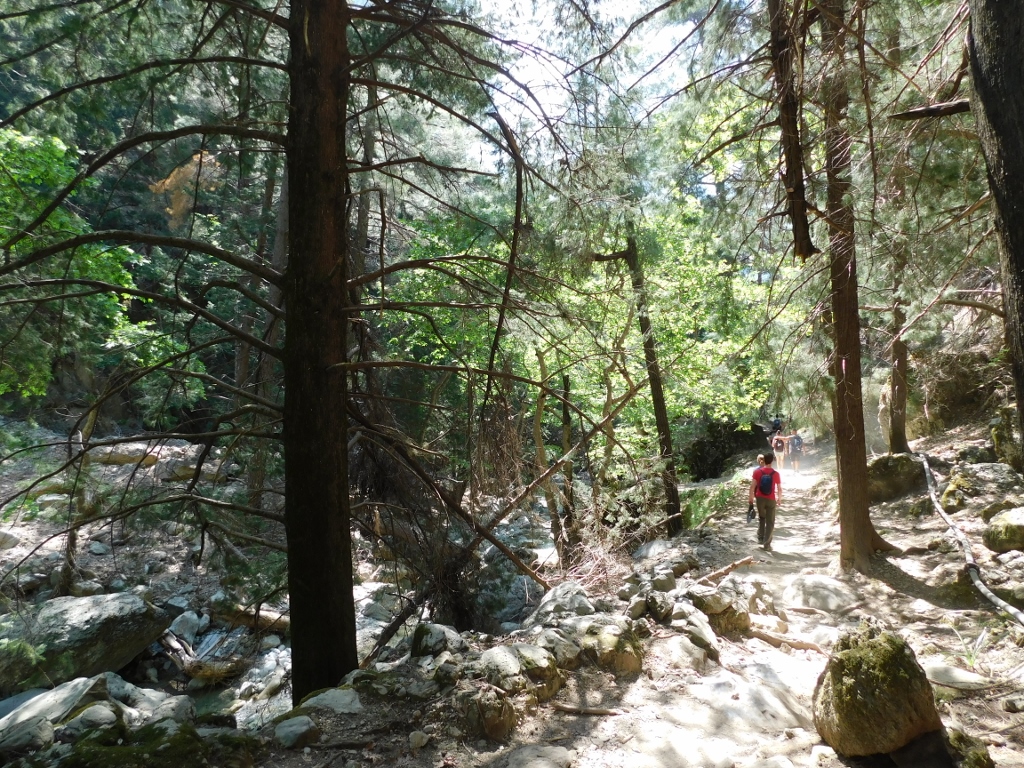 Samaria Gorge, a detail
Samaria Gorge, a detail
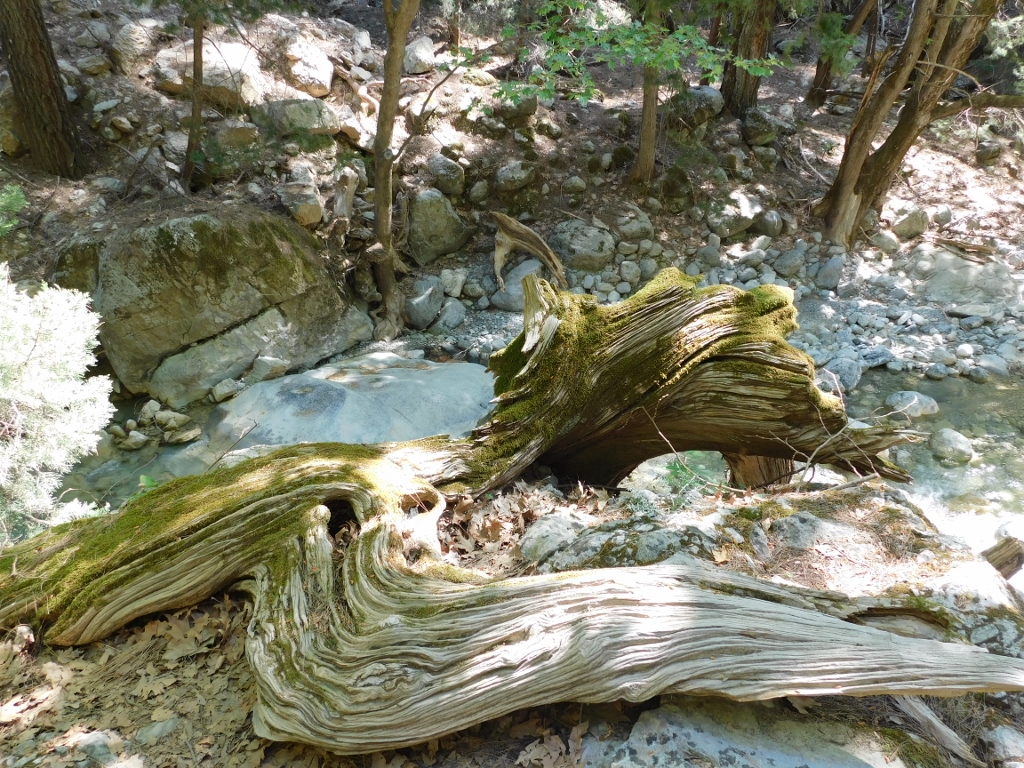 Samaria Gorge, a detail
Samaria Gorge, a detail
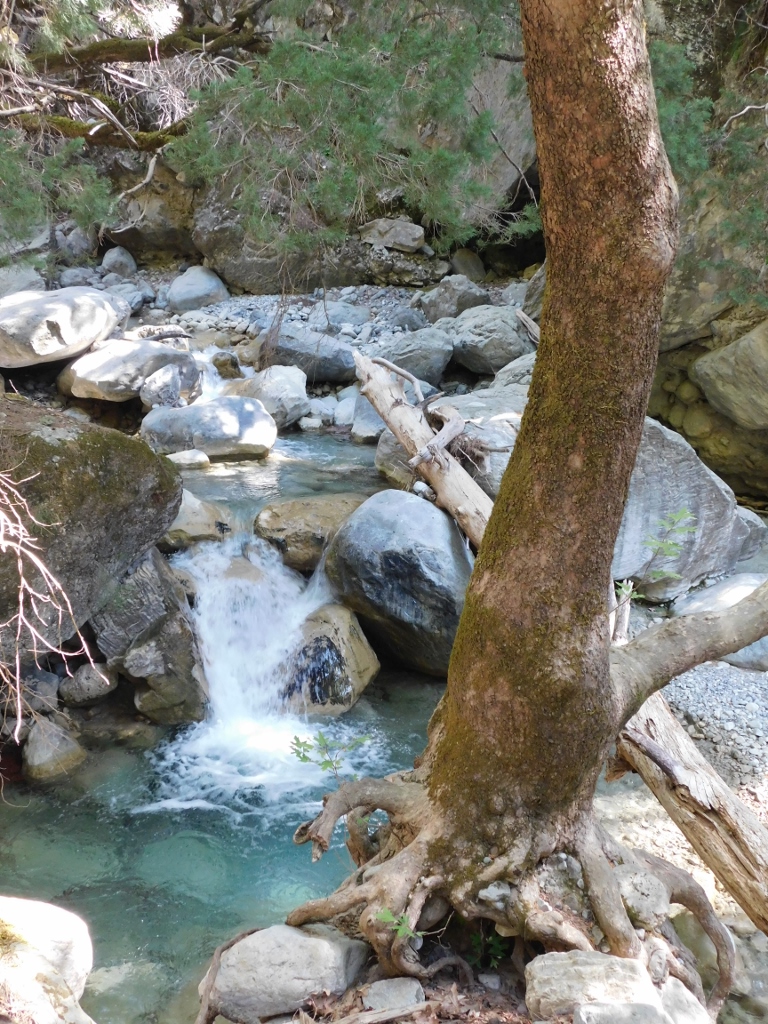 Samaria Gorge, a detail
Samaria Gorge, a detail
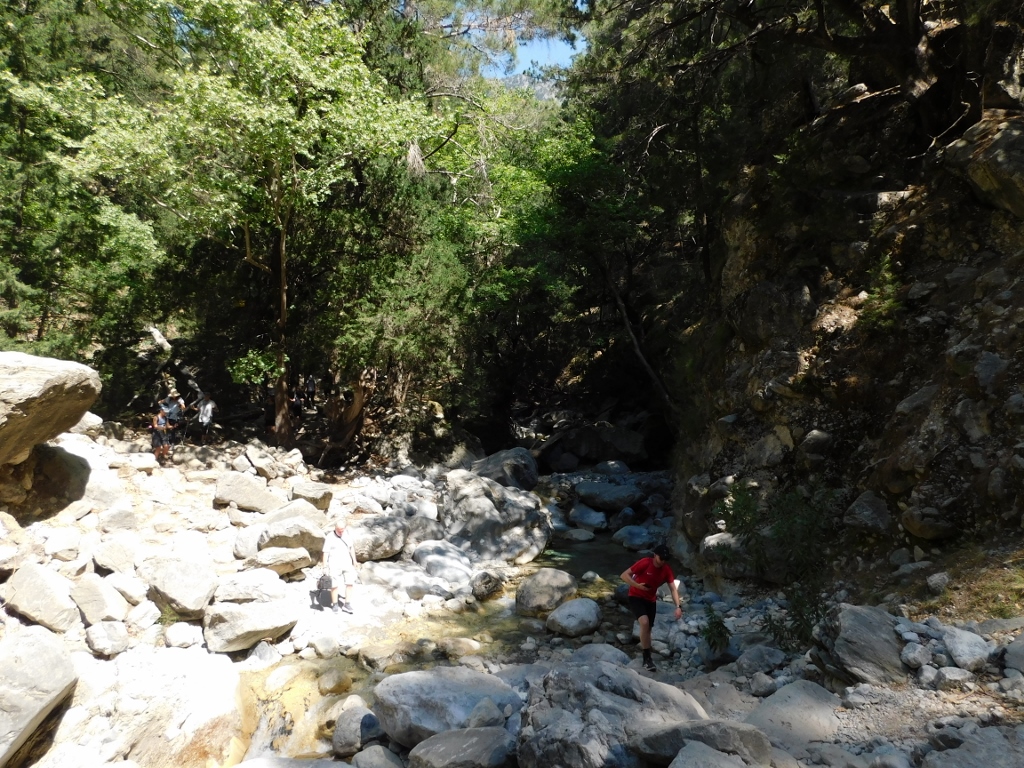 Samaria Gorge, a detail
Samaria Gorge, a detail
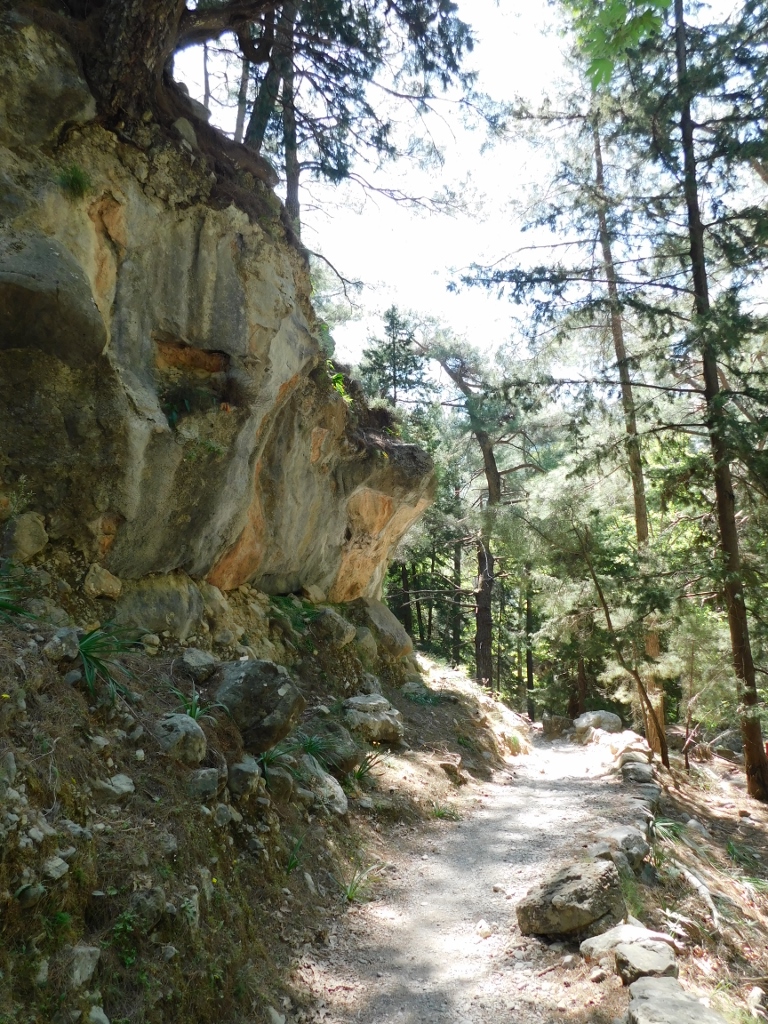 Samaria Gorge, a detail
Samaria Gorge, a detail
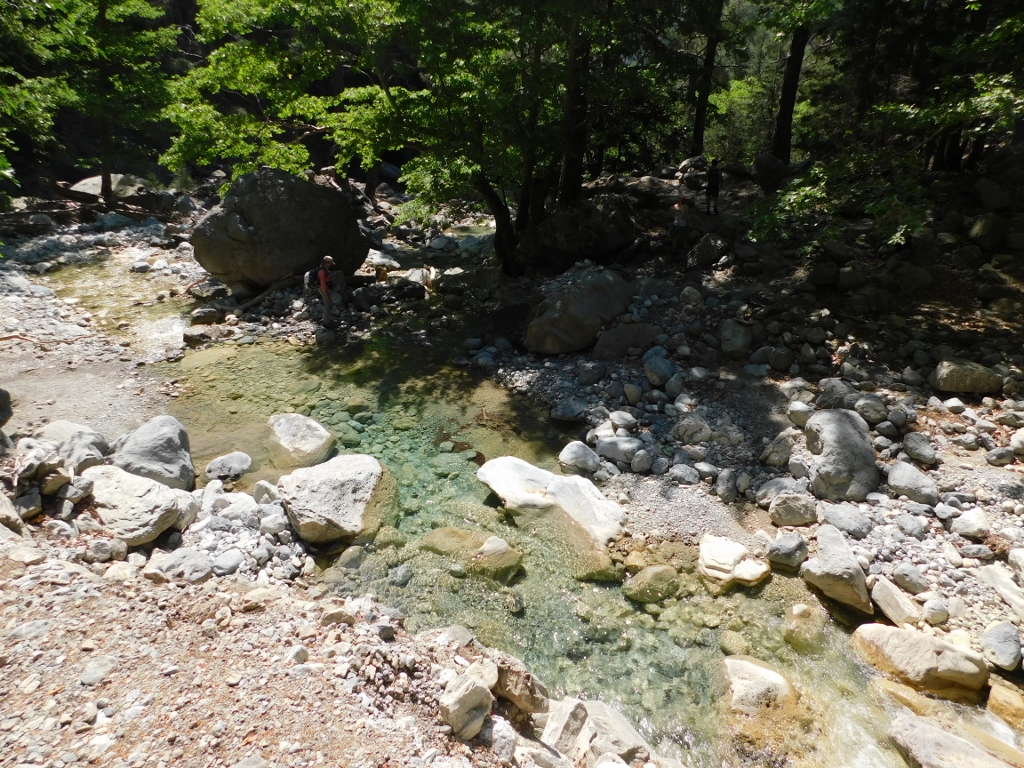 Samaria Gorge, a detail
Samaria Gorge, a detail
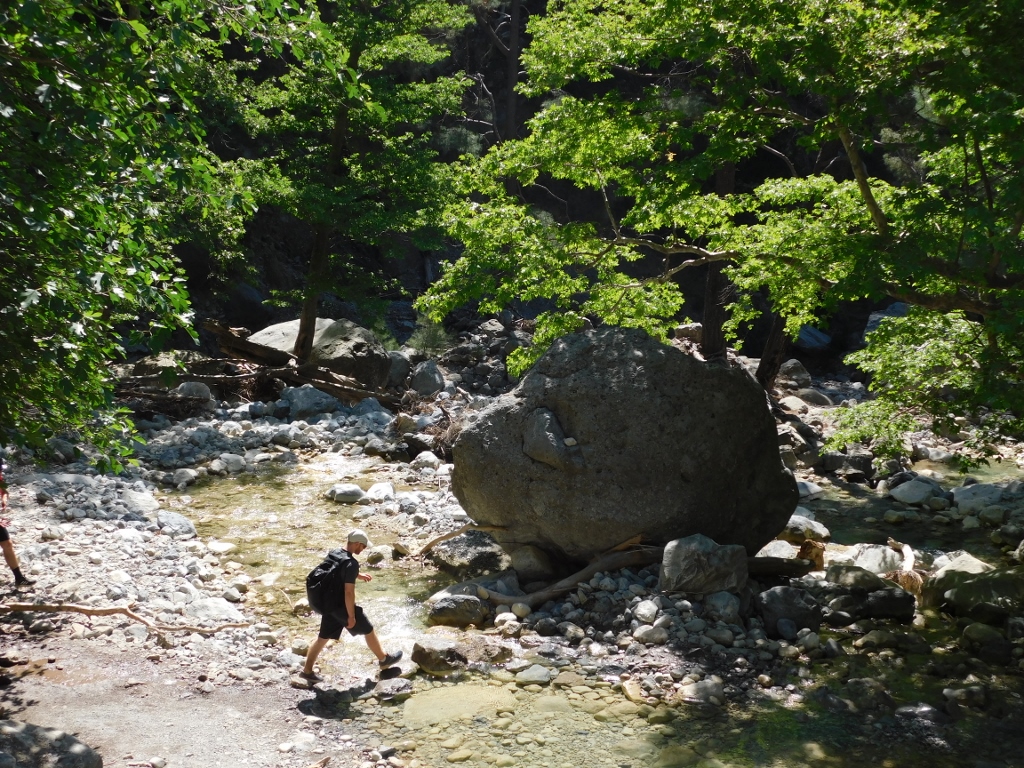 Samaria Gorge, a detail
Samaria Gorge, a detail
Soon I came across yet another rest area and although I had taken some water with me, I took the opportunity and drank some nice, fresh water. The water is safe to be drunk here, among other reasons, also because it is prohibited to swim in the river and various other streams around the park. This ensures that the water is not polluted by creams and lotions and all other things people could bring into it.
As for the smokers, it is important that smoking is also prohibited along the trail, as well as throughout the national park, except at the rest points, while consumption of alcohol is prohibited everywhere. It is also not permitted to camp within the national park. Pets can be taken along, but only on a leash.
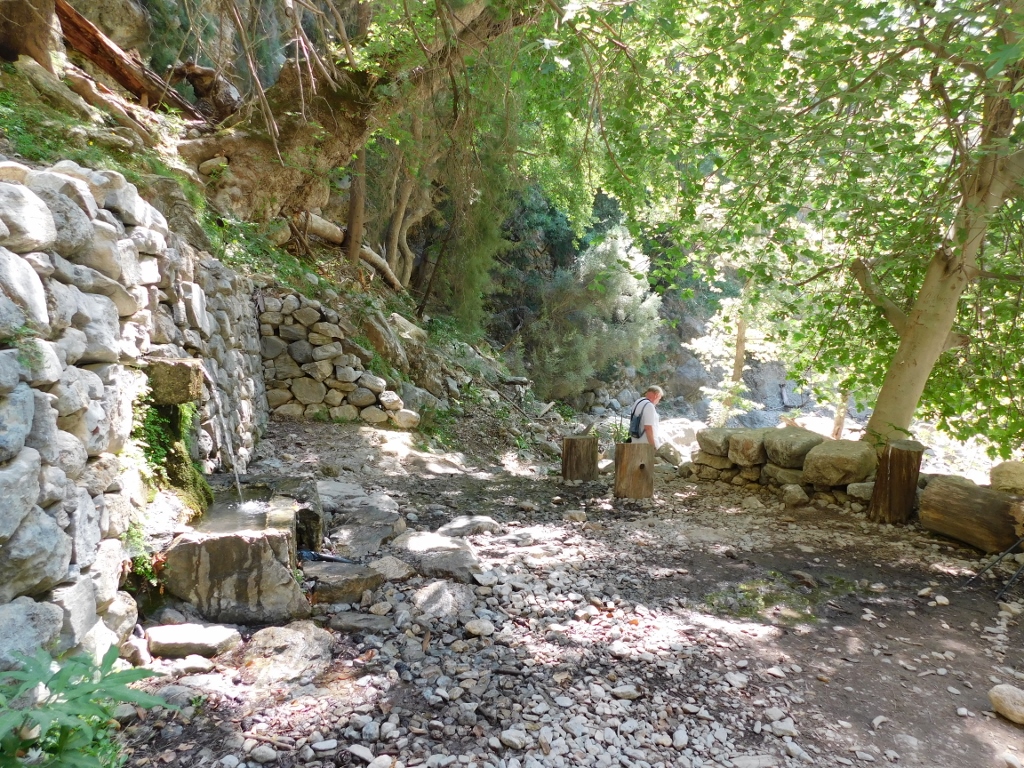 Samaria Gorge, a detail
Samaria Gorge, a detail
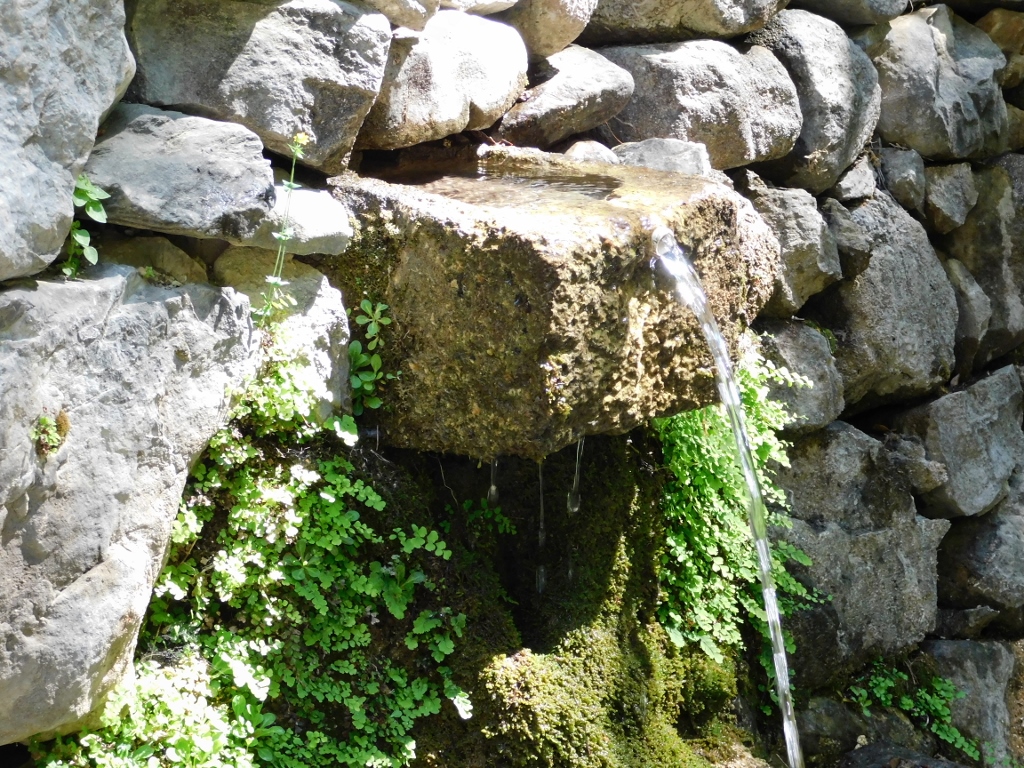 Samaria Gorge, a detail
Samaria Gorge, a detail
At some point, I went a little off the trail, after all just like the rest of the visitors, in order to have a better view at a pretty small waterfall. The waterfall aside, but the pond it made was absolutely magical. On the other hand, although this water may seem luring and inspirational for a dip or two, it was not just a question of whether it was permitted to swim there or not. From my personal experience I know that these mountain rivers and streams, regardless of the beauty and attractiveness, can be absolutely icy. One should just remember that the tops of the White Mountains in which the national park is were still sporadically covered by snow.
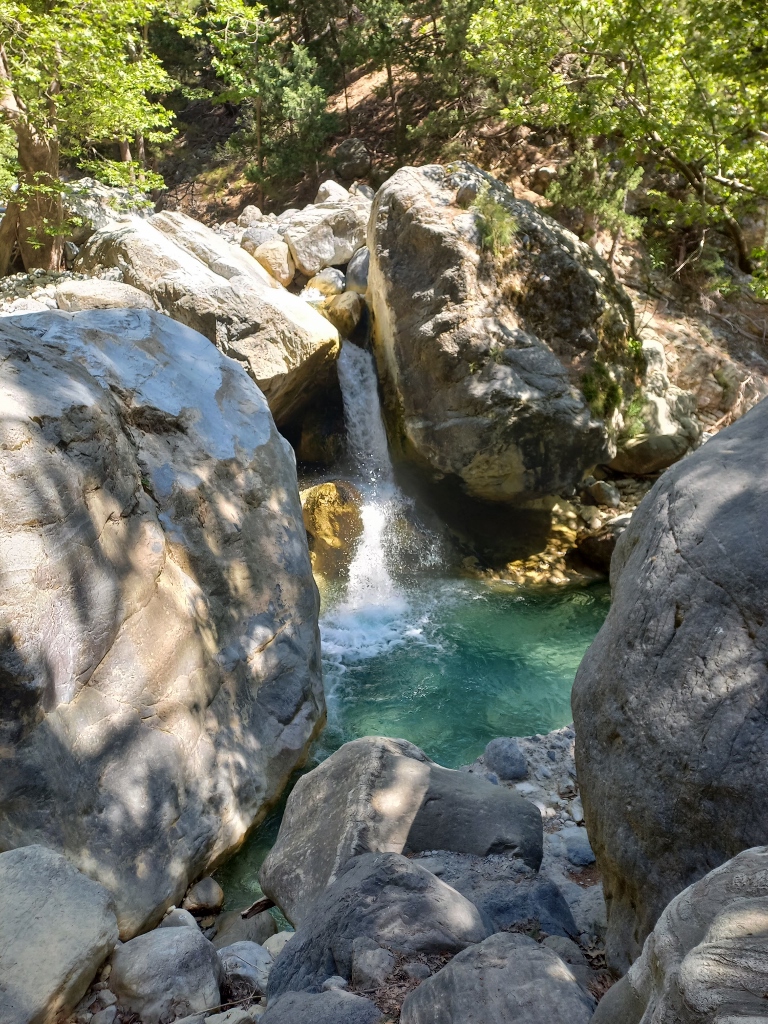 Samaria Gorge, a detail
Samaria Gorge, a detail
But, all other, dry, parts of the gorge were just as beautiful, so very soon I continued with my walk.
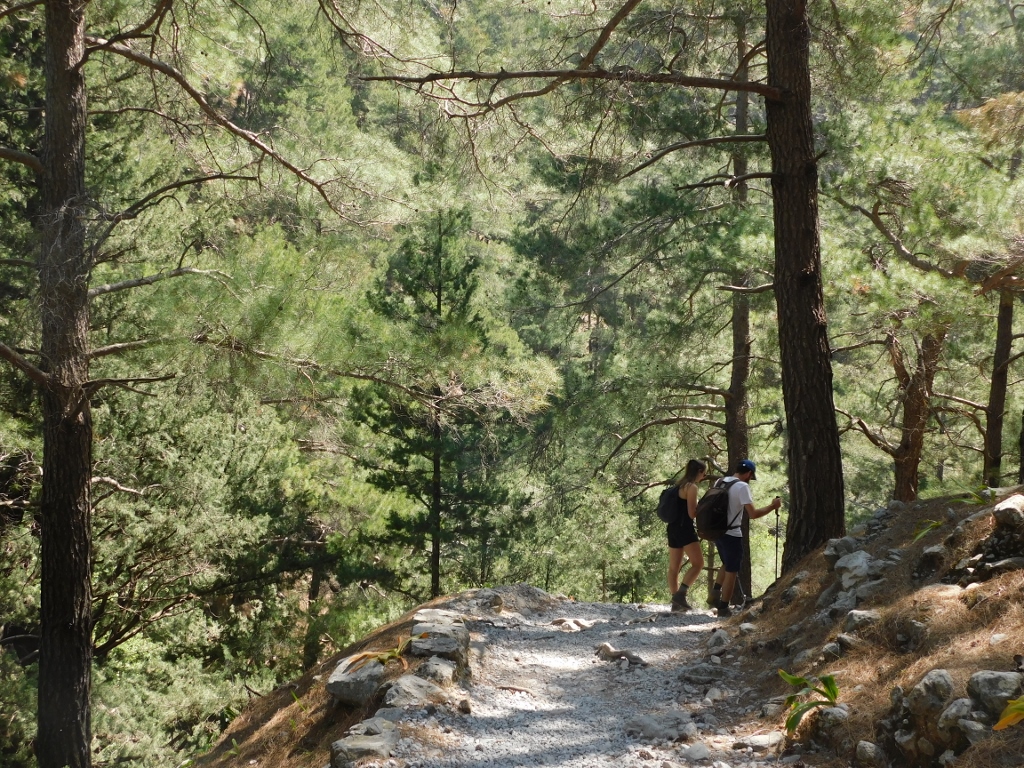 Samaria Gorge, a detail
Samaria Gorge, a detail
The vegetation also started to change a little now, the trail led deeper through the gorge and the river widened slightly being filled up, as I presume, with the water from the side streams and more and more often we had to cross it.
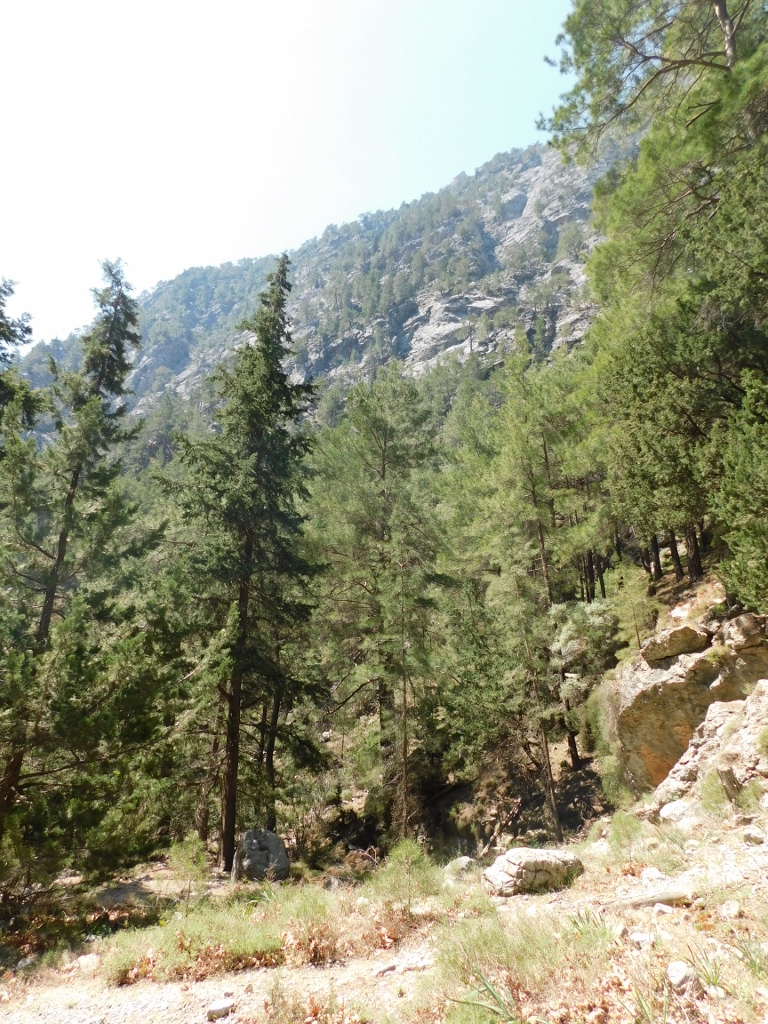 Samaria Gorge, a detail
Samaria Gorge, a detail
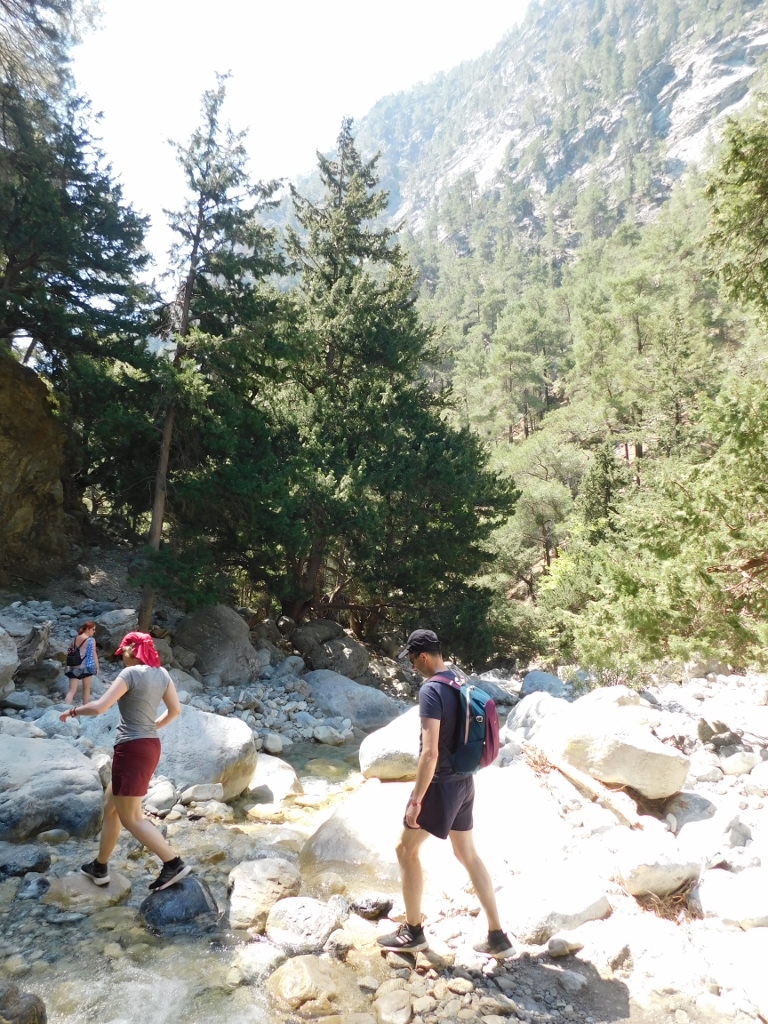 Samaria Gorge, a detail
Samaria Gorge, a detail
Some people used the spots where the river and the trail crossed in order to have a rest and cool their (probably) already tired feet, since one needs to keep in mind that it is not always easy to walk over rocks and stones and uneven terrain, especially when the temperature rises parallel to your fatigue.
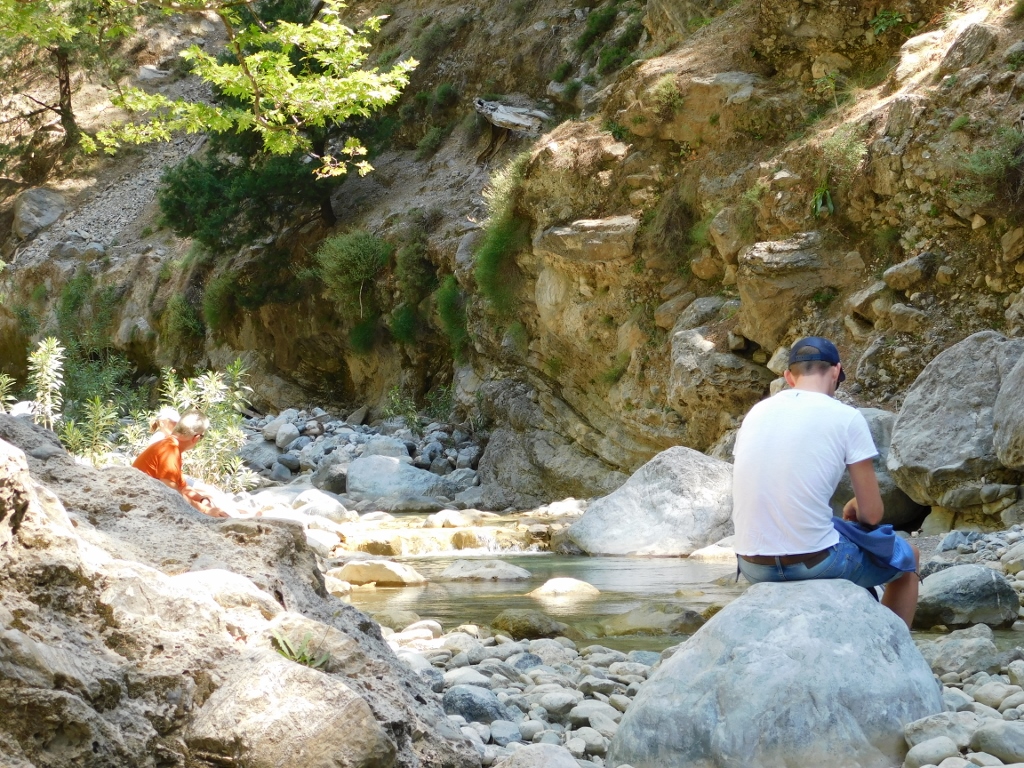 Samaria Gorge, a detail
Samaria Gorge, a detail
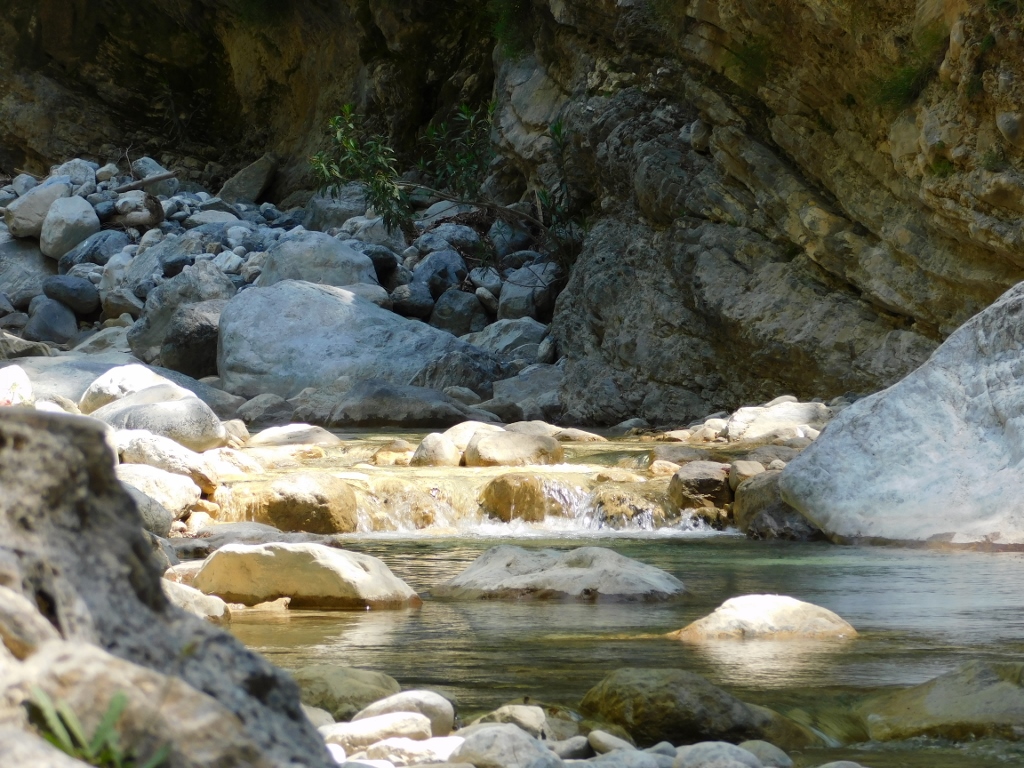 Samaria Gorge, a detail
Samaria Gorge, a detail
The trail then left the riverbed and went up a little into the forest, while through the treetops I could see the surrounding mountain summits.
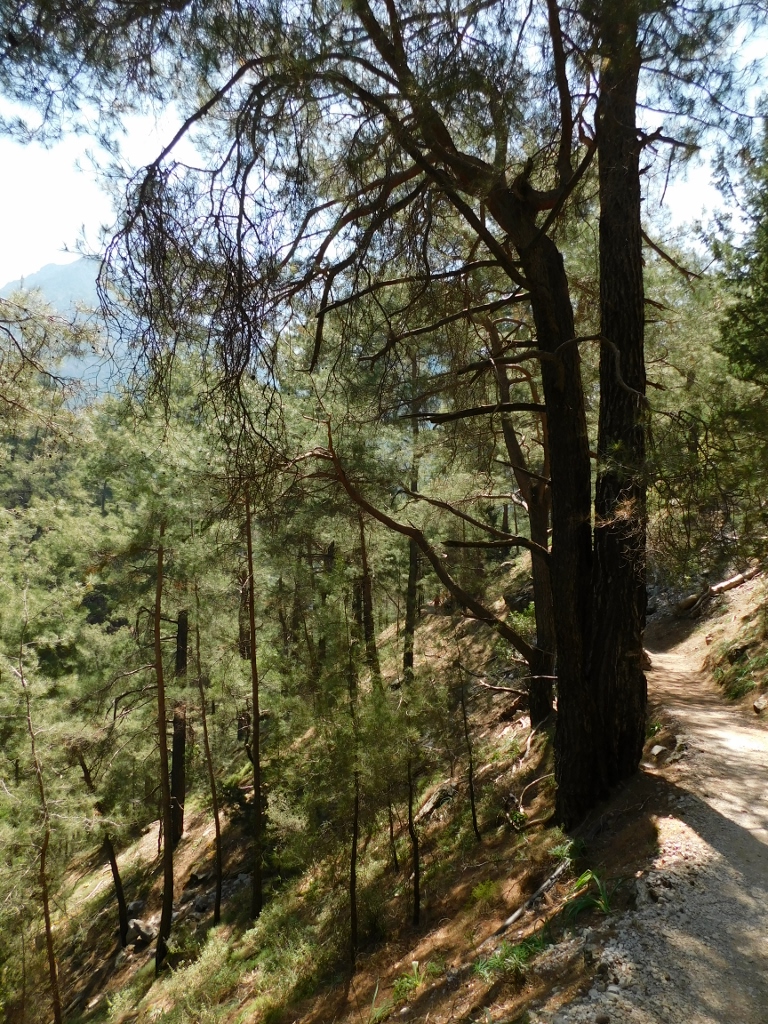 Samaria Gorge, a detail
Samaria Gorge, a detail
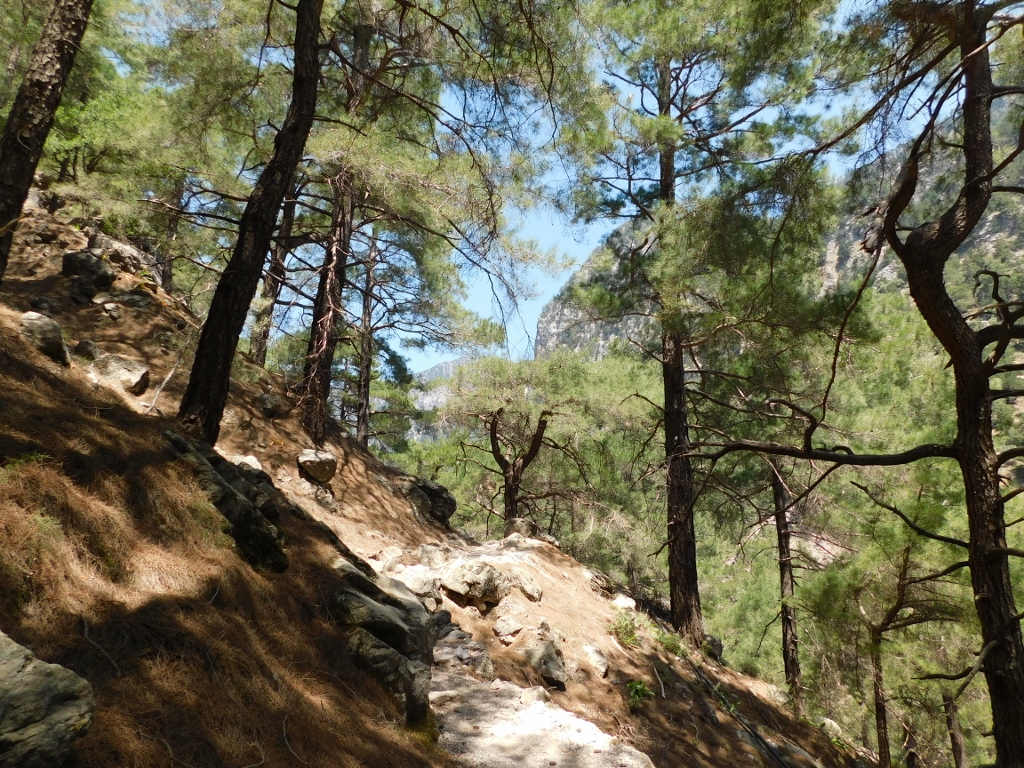 Samaria Gorge, a detail
Samaria Gorge, a detail
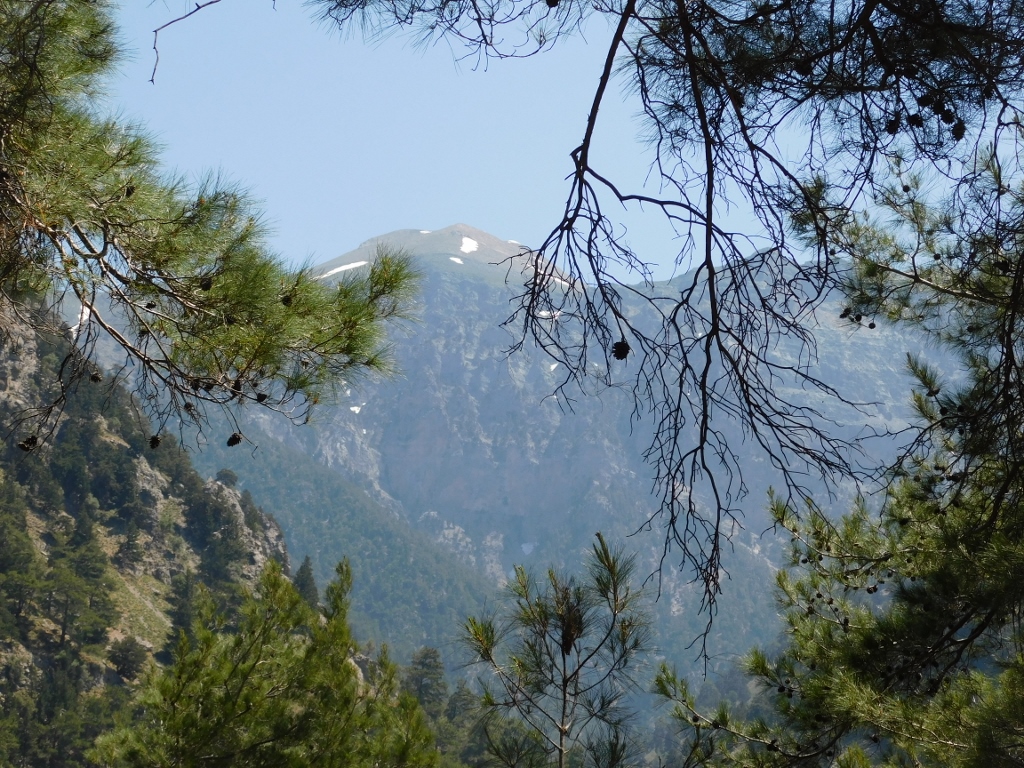 Samaria Gorge, a detail
Samaria Gorge, a detail
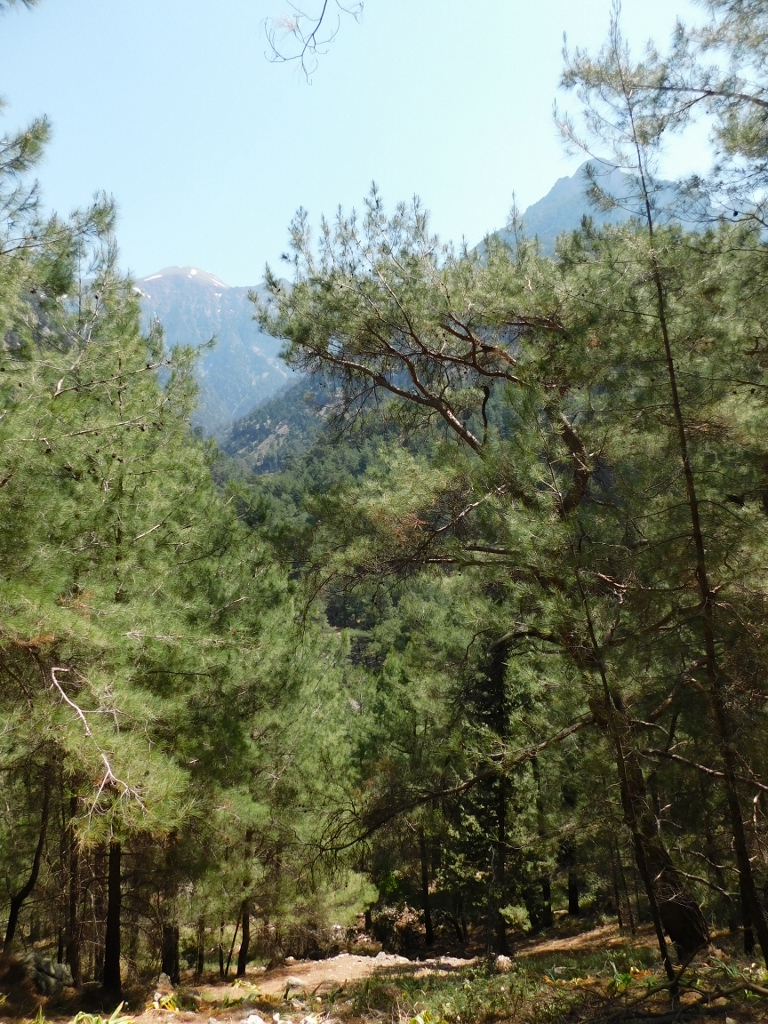 Samaria Gorge, a detail
Samaria Gorge, a detail
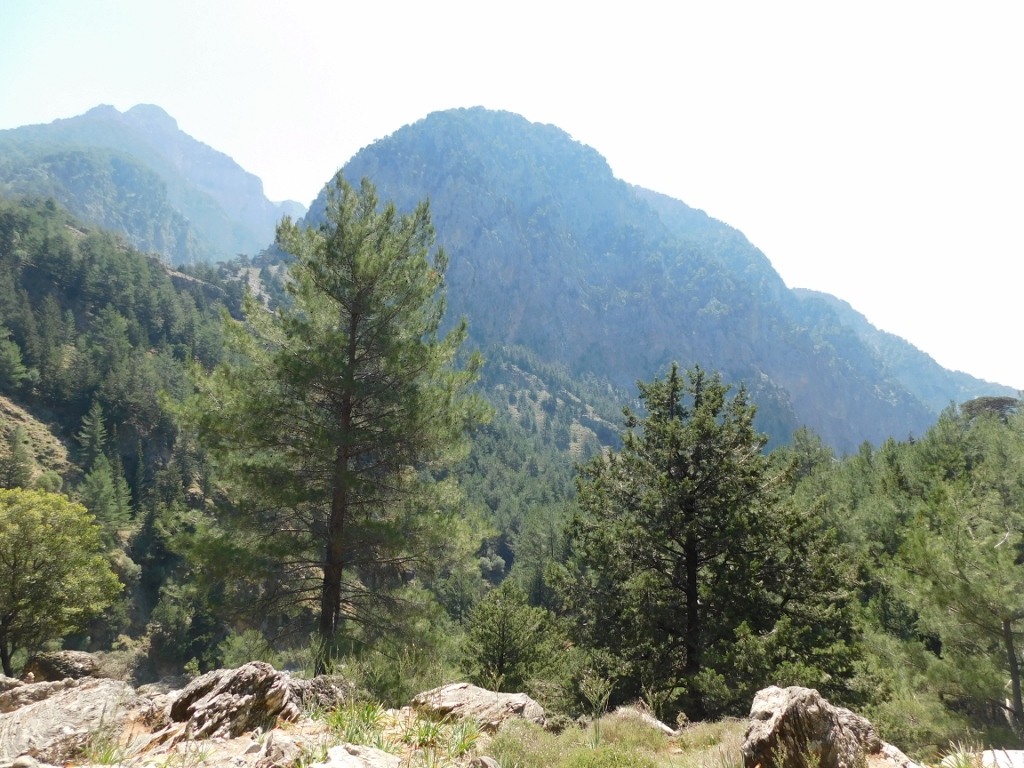 Samaria Gorge, a detail
Samaria Gorge, a detail